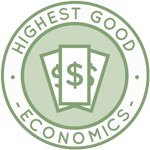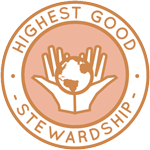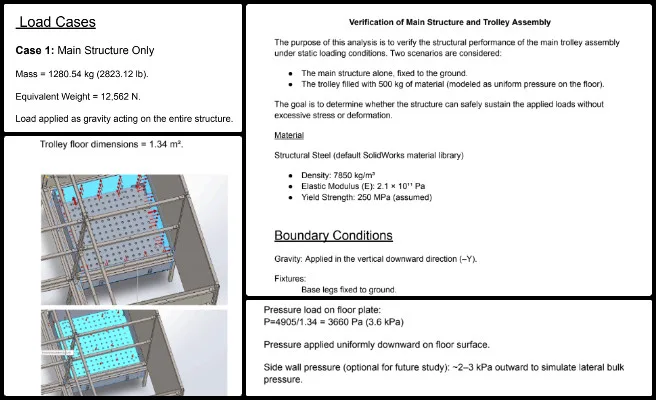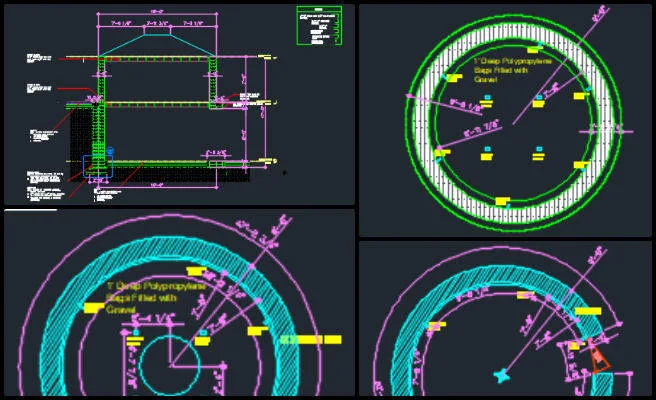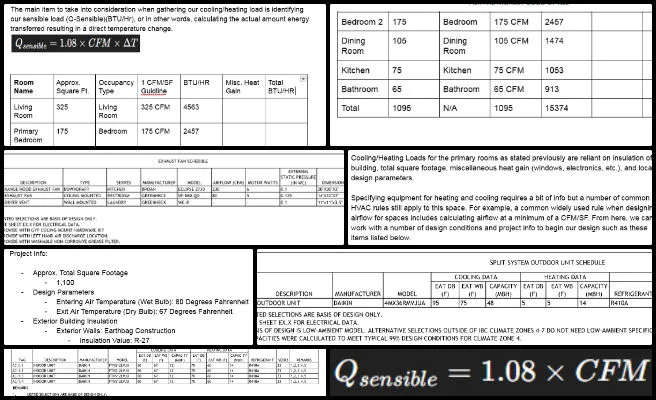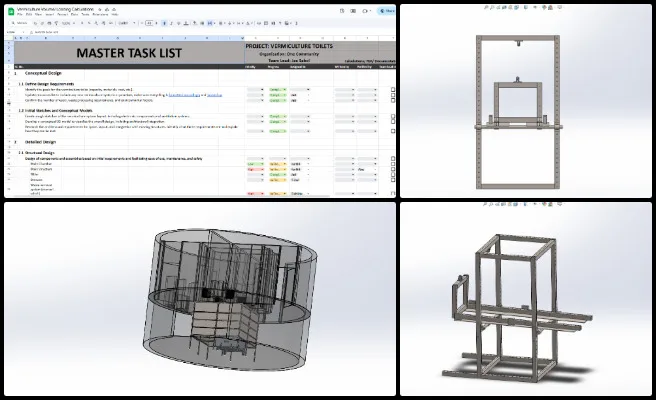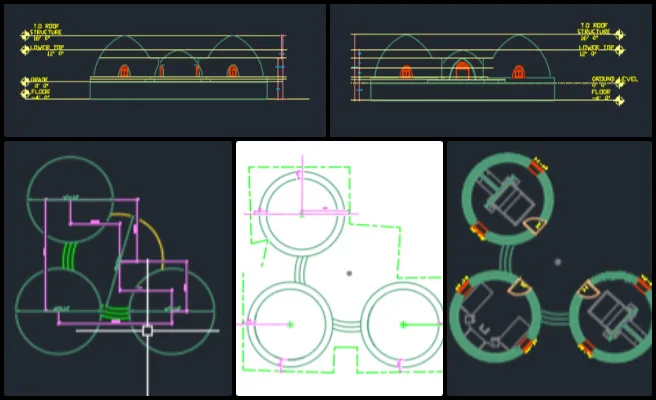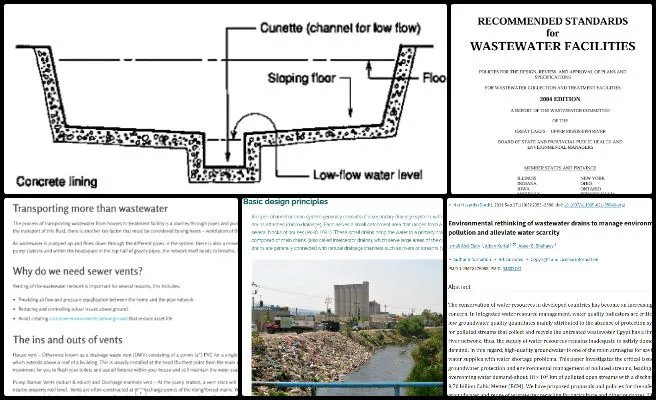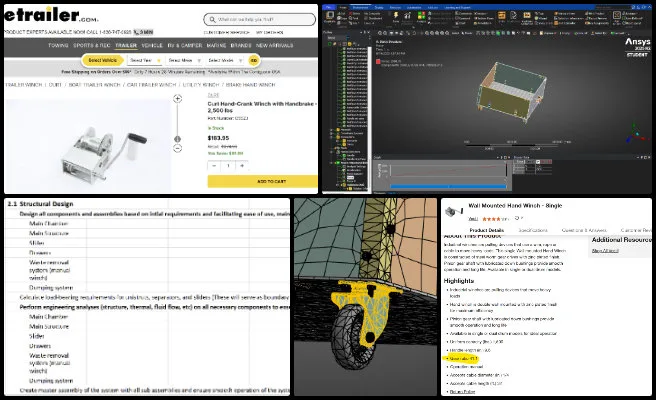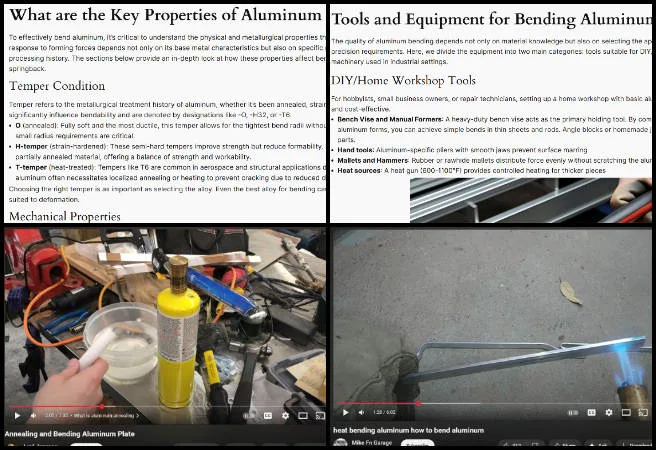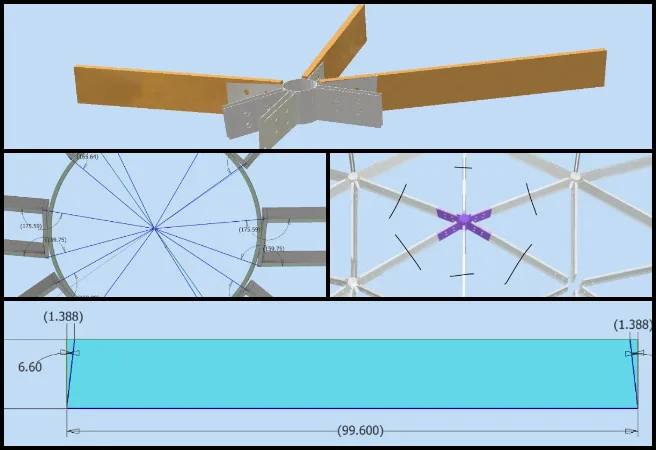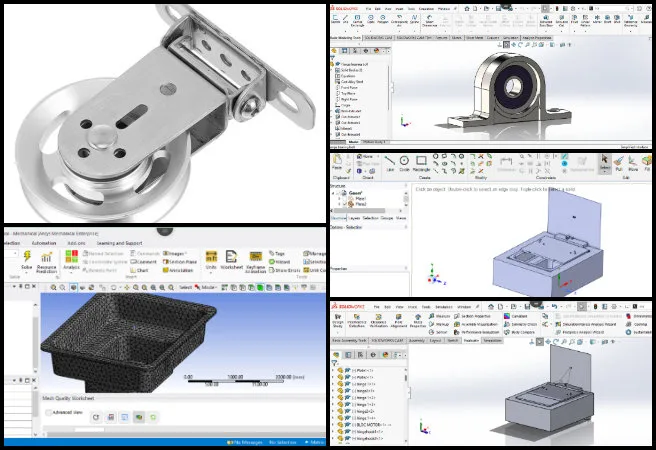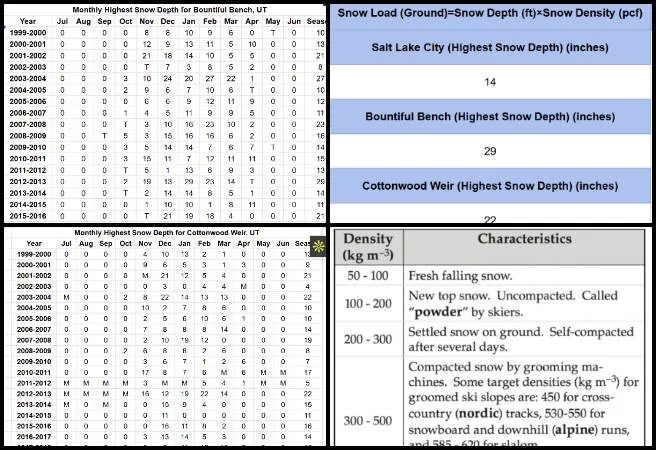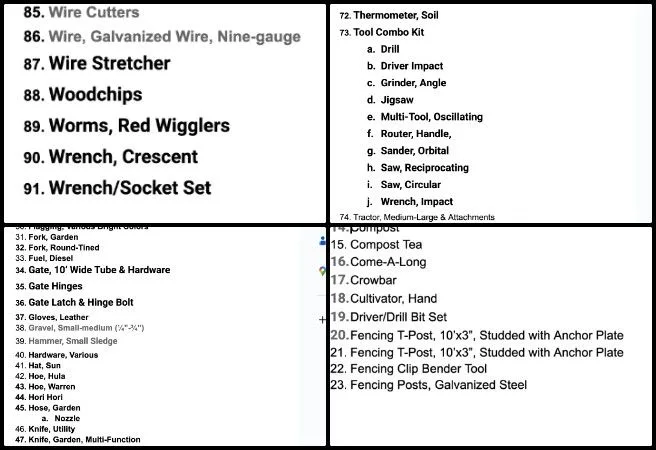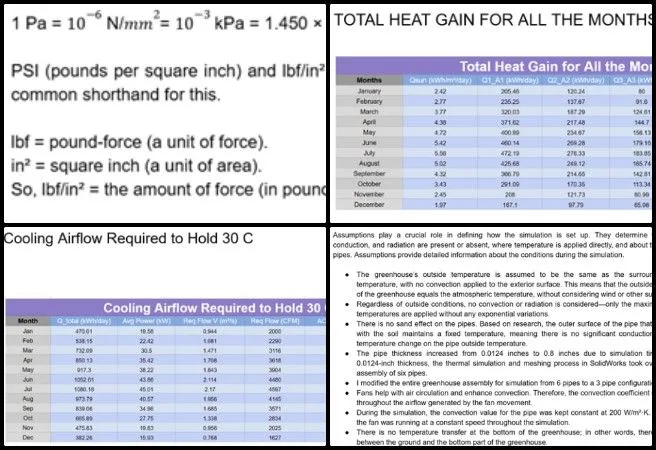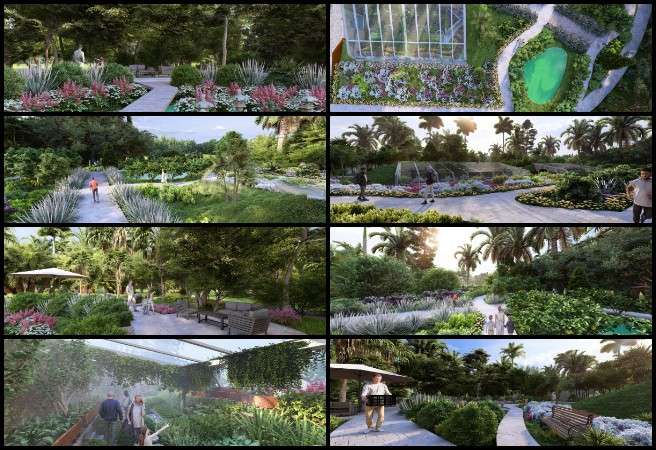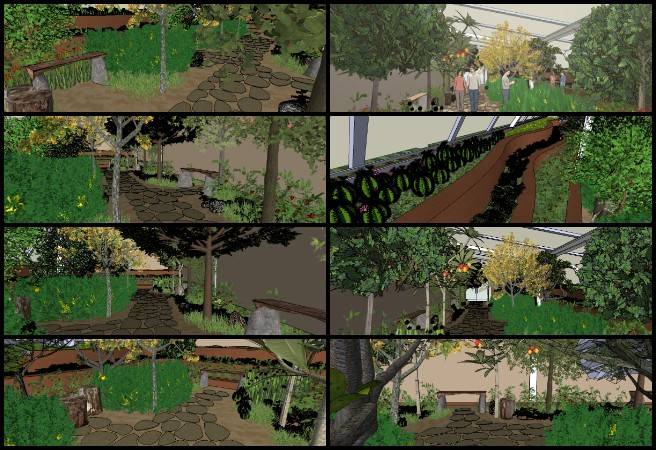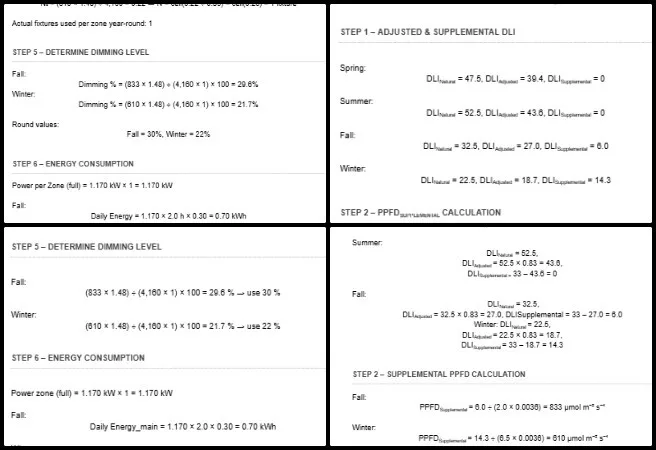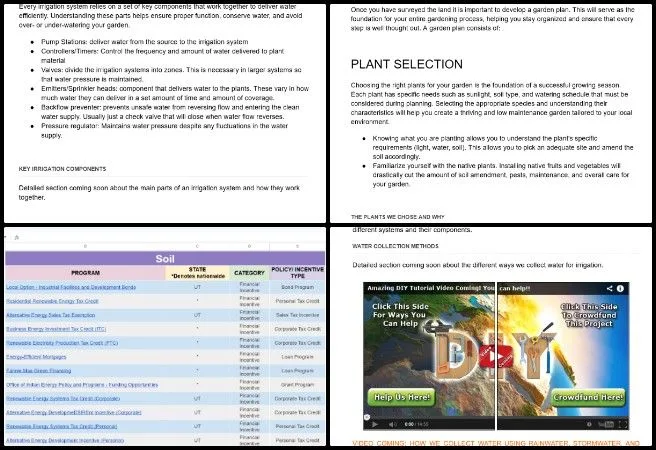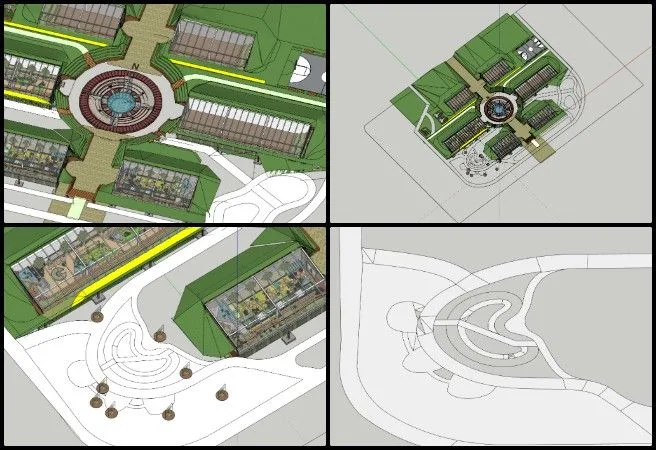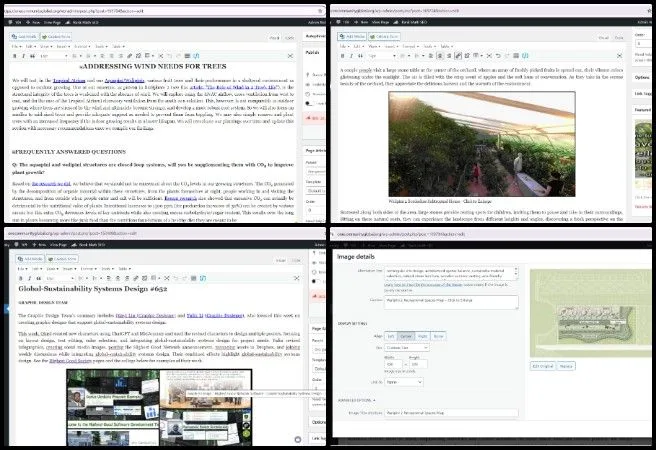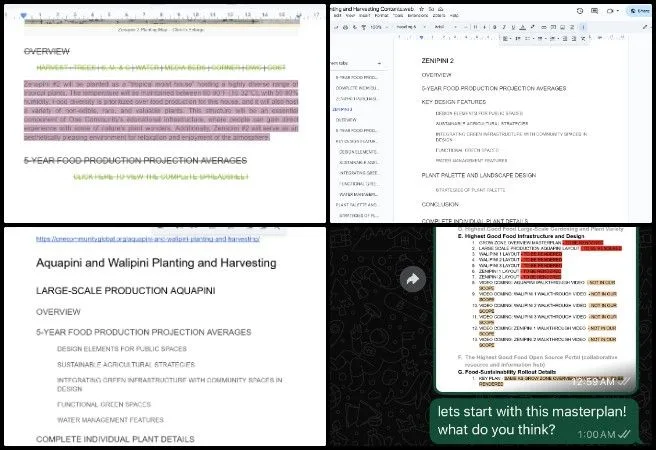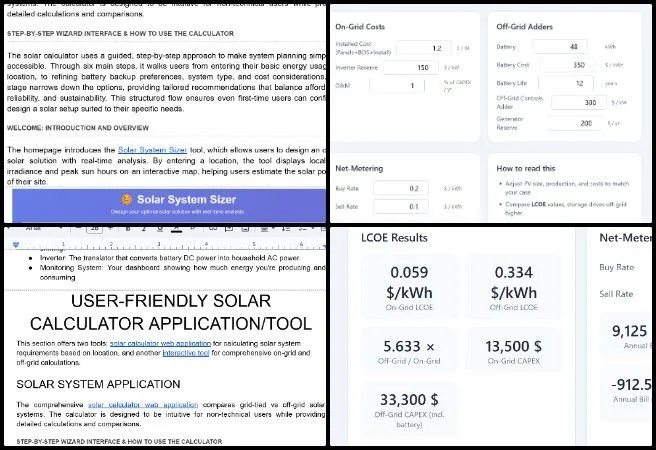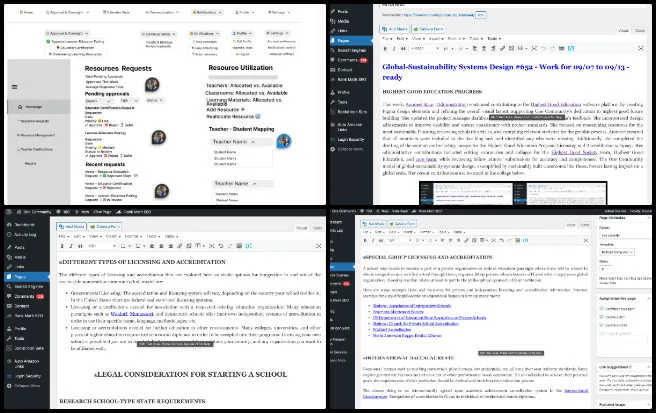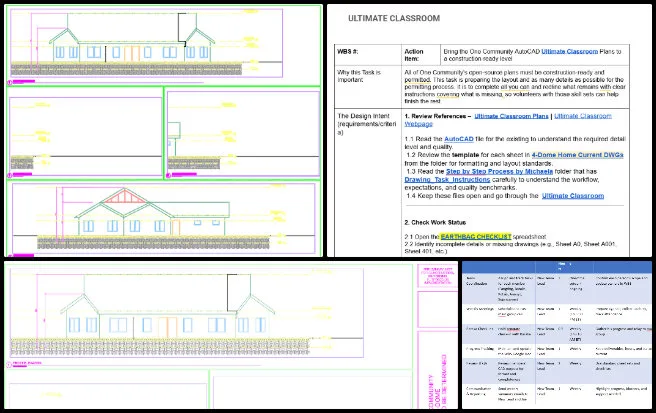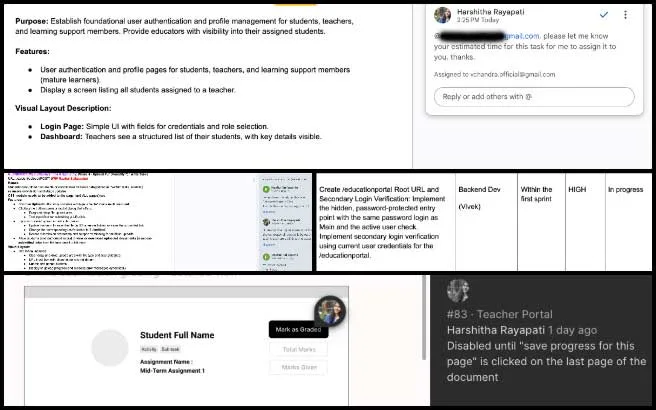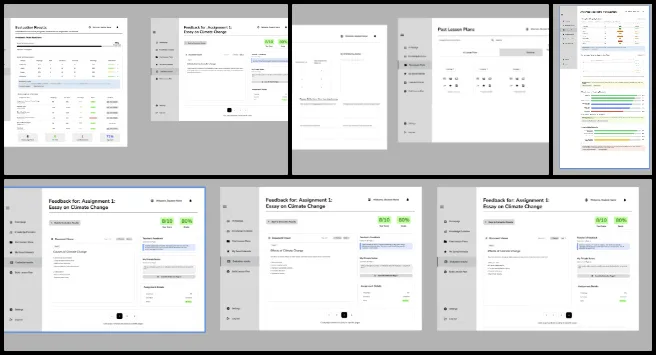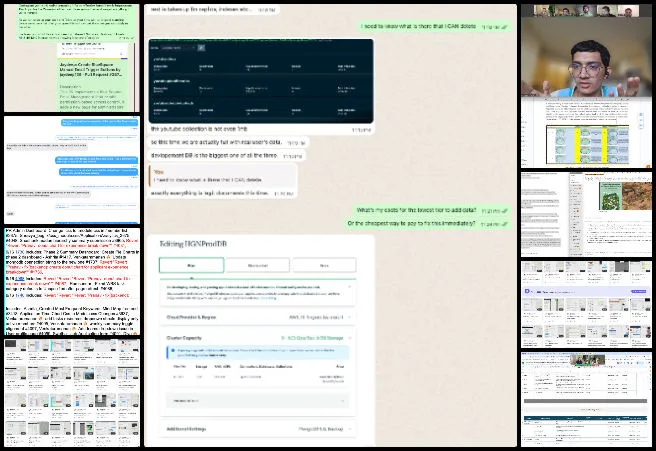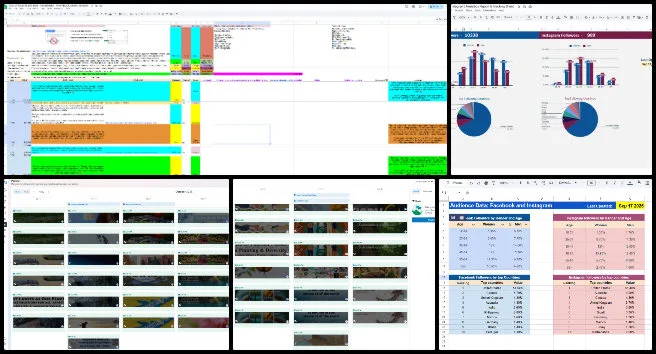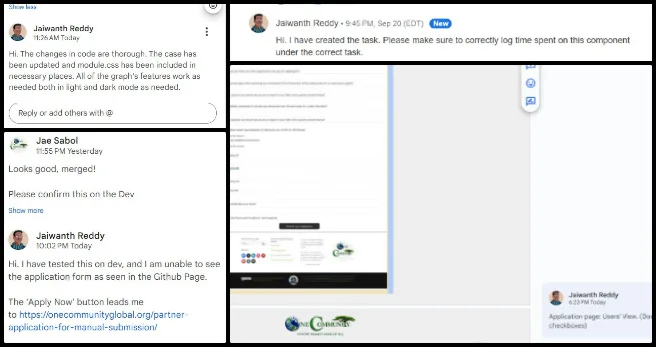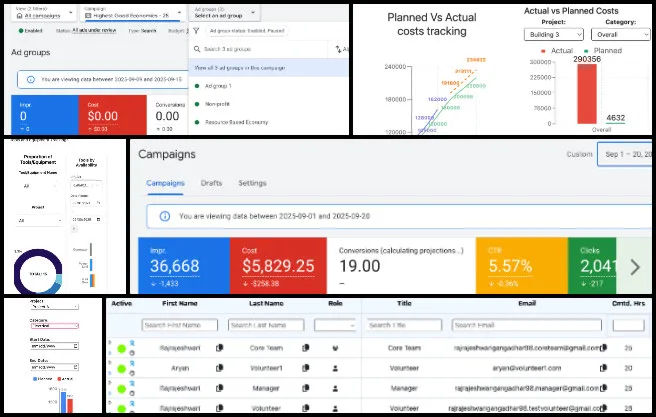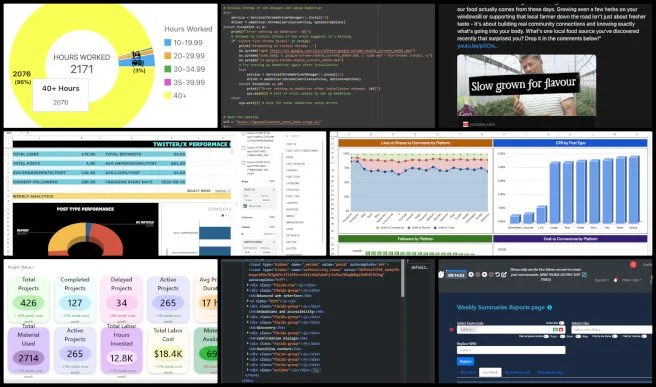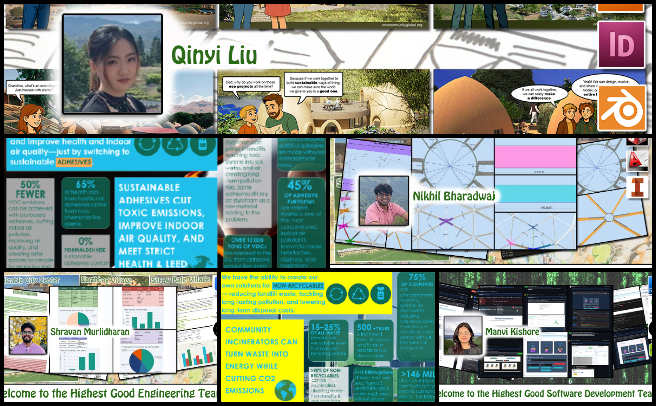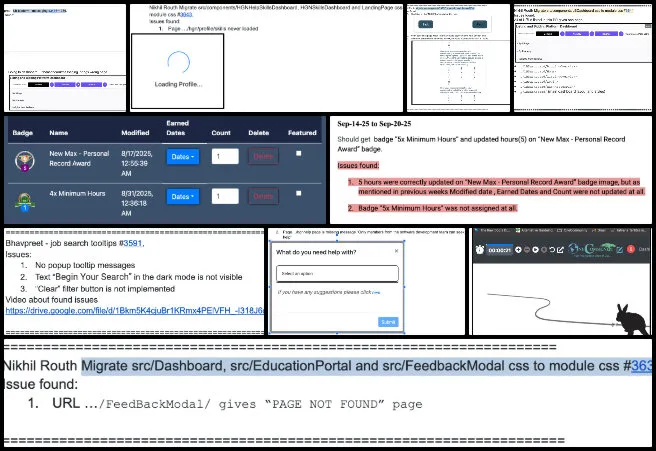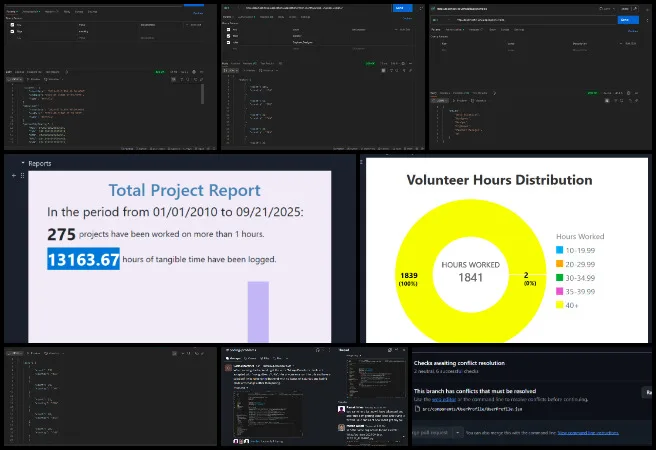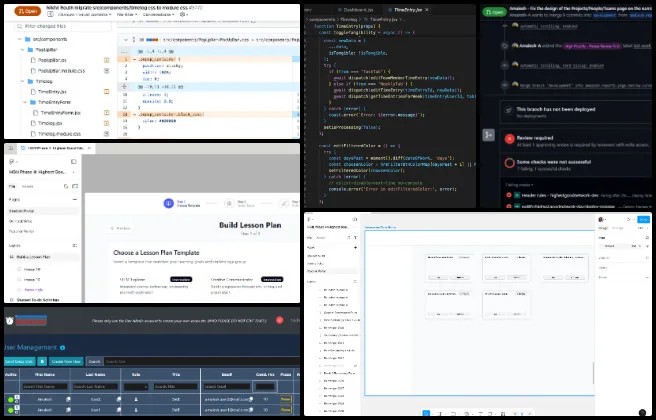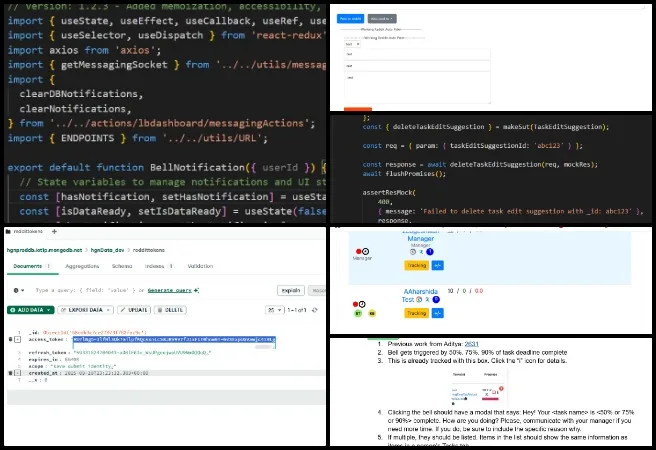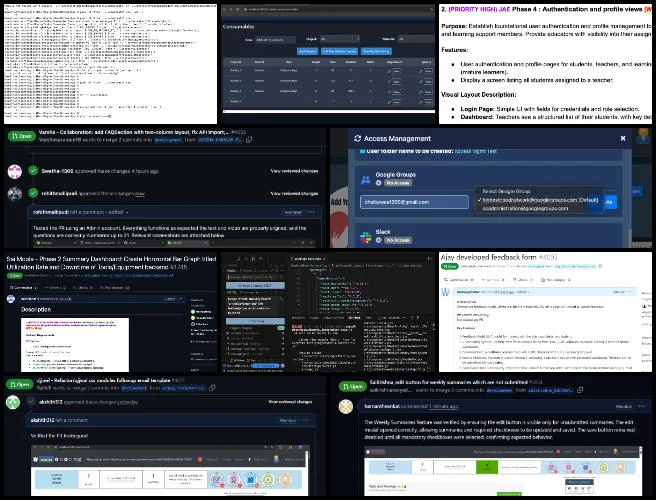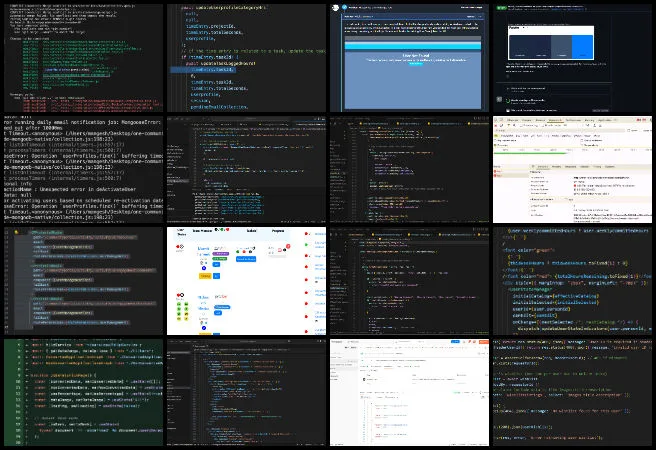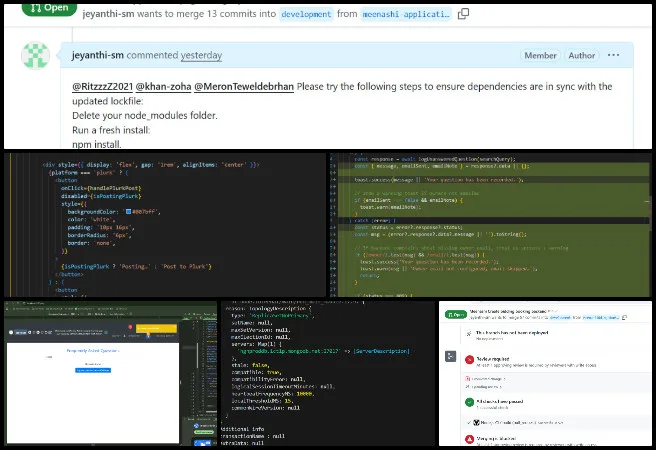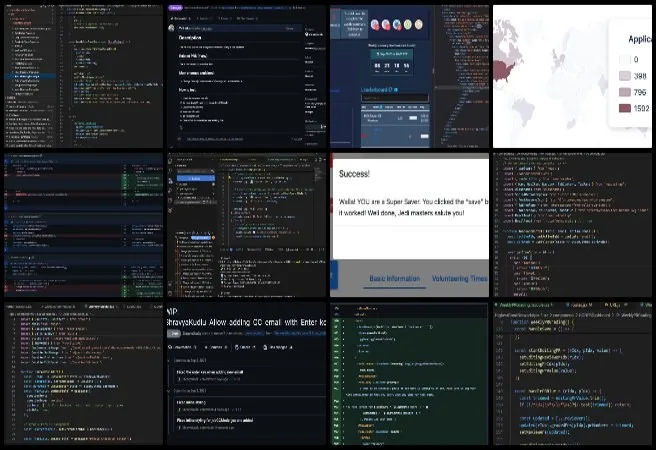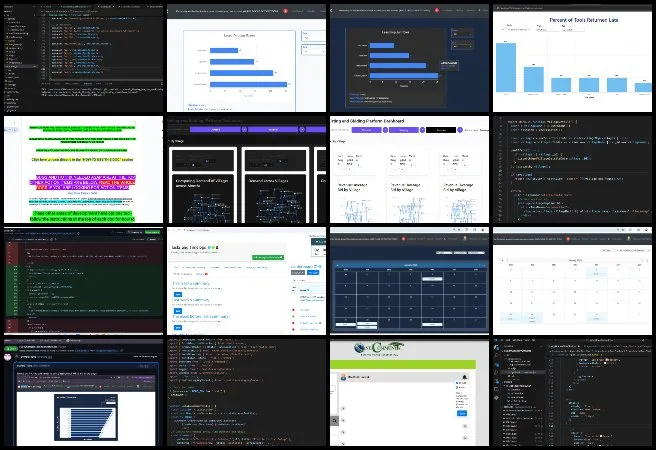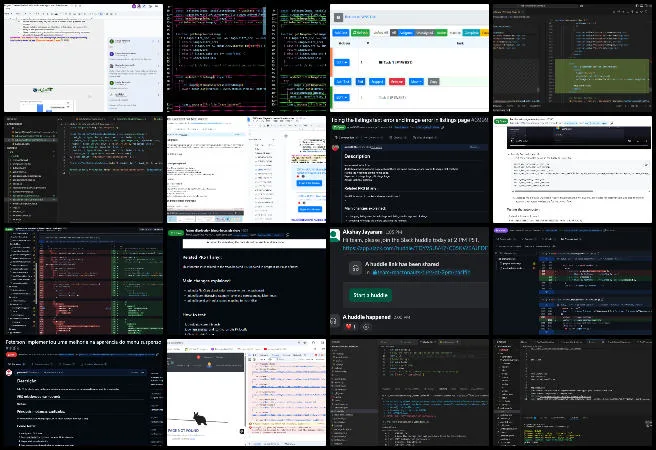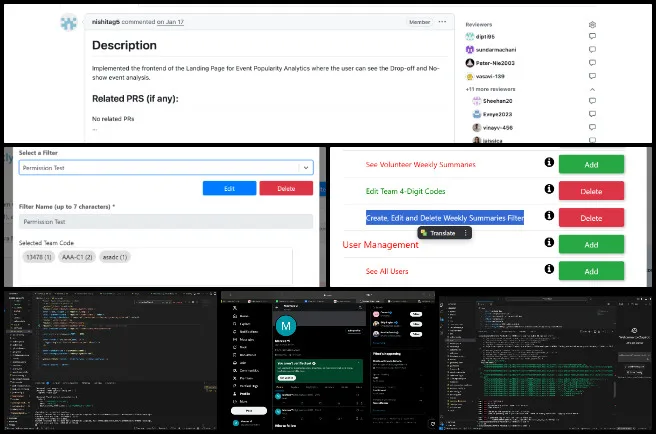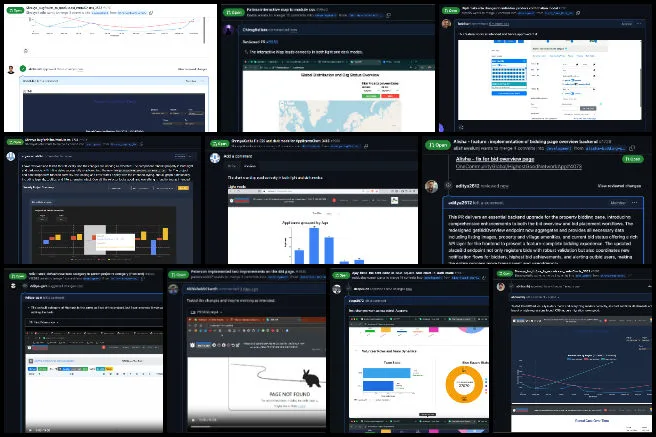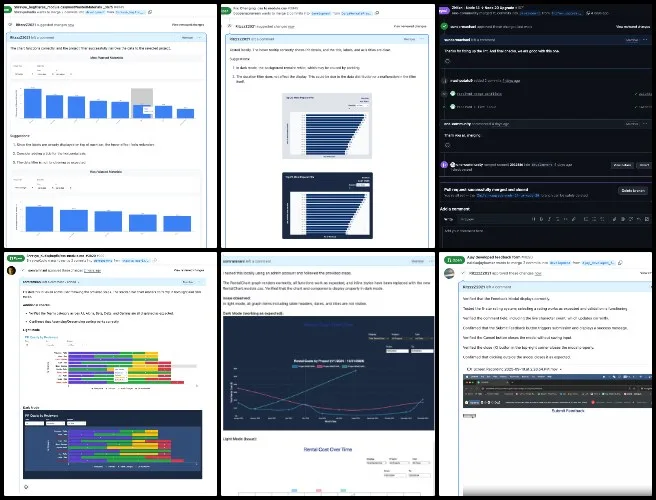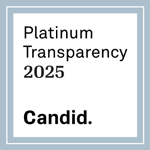Creating a Sustainable World to Benefit Us All – One Community Weekly Progress Update #653
At One Community, we are focused on creating a sustainable world to benefit us all by demonstrating how food, energy, housing, education, economics, social architecture, and more can be designed into a holistic system for thriving and fulfilled living. Every aspect of our work is created by an all-volunteer team and made open source and free-shared, with the goal of forming a model that becomes self-replicating. Through open sourcing and free sharing the complete process, we aim to build a global network of teacher/demonstration hubs, regenerating our planet and evolving sustainability for The Highest Good of All.
- Here’s our project overview
- Here’s our world-change methodology
- Here’s how this becomes self-replicating
- Here’s how we are open source and free-sharing all the do-it-yourself designs
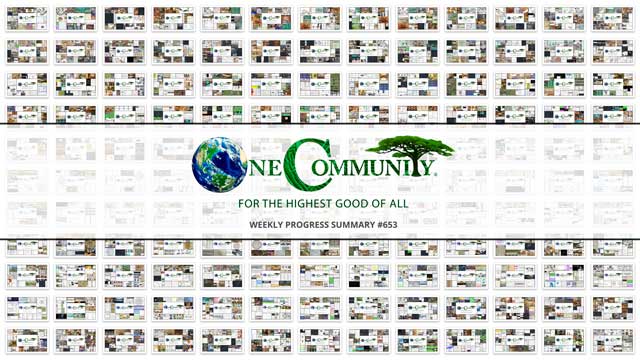
OUR MAIN OPEN SOURCE HUBS
Click on each icon to be taken to the corresponding Highest Good hub page.
One Community’s physical location will forward this movement as the first of many self-replicating teacher/demonstration communities, villages, and cities to be built around the world. This is the September 22, 2025 edition (#653) of our weekly progress update detailing our team’s development and accomplishments:
Creating a Sustainable World to Benefit Us All
One Community Progress Update #653
DONATE | COLLABORATE | HELP WITH LARGE-SCALE FUNDING
CLICK HERE IF YOU’D LIKE TO RECEIVE AN EMAIL EACH WEEK WHEN WE RELEASE A NEW UPDATE
YOU CAN ALSO JOIN US THROUGH SOCIAL MEDIA
ONE COMMUNITY WEEKLY UPDATE DETAILS
HIGHEST GOOD HOUSING PROGRESS
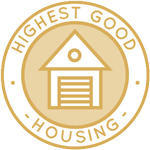 One Community is creating a sustainable world to benefit us all through Highest Good housing that is artistic and beautiful, more affordable, more space efficient, lasts longer, DIY buildable, and constructed with healthy and sustainable materials:
One Community is creating a sustainable world to benefit us all through Highest Good housing that is artistic and beautiful, more affordable, more space efficient, lasts longer, DIY buildable, and constructed with healthy and sustainable materials:
- Learn about: Our Upcoming Crowdfunding Campaign
- Learn about the different village models: 7 Sustainable Village Models
- Visit the open source portals for the first two: Earthbag Village OS Hub | Straw Bale Village OS Hub
This week, Ajay Adithiya Kumar Elancheliyan Tamilalagi (Mechanical Engineer) worked on the verification of the main structure and trolley assembly for the Earthbag Village. He used SolidWorks simulation tools to analyze two load cases, applying material properties for structural steel from the SolidWorks library. He applied bonded contact conditions between the frame members, wall panels, and floor plate. He calculated the downward force by the structure’s self-weight and added payload applied to the trolley floor. He also considered options for lateral side wall pressure for study. One Community’s open source designs for creating a sustainable world to benefit us all begins with the Earthbag Village, the first of seven planned villages providing housing. See below for some of the pictures related to this work.
Baraka Minja (Civil and Environmental Engineer Pr. Eng.) continued updating the CAD drawings for the Vermiculture Toilet communal shower by updating the excavation, basement, and first floor layouts. He added roof and wall plan layouts to the existing set and included an additional section through the building that illustrates both entrances to the first floor and the basement. He also added more detailed dimensions across these drawings to improve clarity and alignment with the overall design. As the first of seven planned villages, the Earthbag Village provides the initial housing within One Community’s open source designs for creating a sustainable world to benefit us all. The photos below showcase some of his work.
Derrell Brown (Plumbing Designer) continued working on the Earthbag Village final MEP report by gathering mechanical reference information related to design and calculation breakdowns. He reviewed the latest mechanical plans to update the process of mechanical design, including project information, design considerations, and supporting formulas. He also developed step-by-step processes within the mechanical scope to outline mechanical design procedures, emphasizing formulas and numerical data. One Community’s open source designs for creating a sustainable world to benefit us all begins with the Earthbag Village, the first of seven planned villages providing housing. See below for some of the pictures related to this work.
Karthik Pillai (Mechanical Engineer) continued work on the Vermiculture Toilet focusing primarily on the integration of new team members. Three individuals joined the team, and he provided an overview of the project and addressed questions. For the waste dumping assembly, Rahul made modifications to the drawer design, requiring adjustments to the mechanism to accommodate the changes. In parallel, work continued on the Earthbag Village 4-dome cluster project on the report outlining the current developments of the roof structure. As the first of seven planned villages, the Earthbag Village provides the initial housing within One Community’s open source designs for creating a sustainable world to benefit us all. The collage below highlights recent progress.
Ketsia Kayembe (Civil Engineer) continued working on the Earthbag Village project after realizing she had used the wrong files for the three-dome plans. She began by identifying and organizing the correct files, then updated the drawings based on the construction template and the feedback she had received. She completed the elevation drawings by adding the correct grade information and elevation dimensions, and made progress on several floor plans, including placing the dome circle locations, the dimensions plan and excavation plan. Ketsia also started identifying the file with the windows and door details. She also participated in the team meeting to provide a progress update, answer questions, and clarify any misunderstandings. One Community’s open source framework for creating a sustainable world to benefit us all begins with the Earthbag Village, the first of seven planned villages providing housing. See below for some of the pictures related to this work.
Rahul Kulkarni (Mechanical Engineer) continued work on the Earthbag Village channel design. He participated in the weekly meeting and shared channel design plans and received a briefing on overall project deliverables. He created a line sketch for the channel design in CAD, and continued to develop initial revisions. Research was carried out on channel design with a focus on ventilation and its effects, and additional investigation was started on the preliminary design of the wastewater channel, considering its impact on the surrounding environment. The Earthbag Village, the first of seven planned villages, serves as the initial housing component within One Community’s open source framework for creating a sustainable world to benefit us all. See below for some of the pictures related to this work.
Rishi Chakrapani (Mechanical Engineer) focused on reviewing the available CAD files to become familiar with the model and attending the weekly meeting to understand assigned deliverables, along with running Finite Element Analysis (FEA) to define more boundary conditions. His work included verifying calculations that had previously been completed for the waste removal system, with a note that cross-checking the associated CAD model dimensions is still pending due to lack of access to the files. He initiated an FEA for the drawer to determine the maximum allowable force on the handle in order to identify an appropriate winch. In addition, Rishi performed research to identify manual winches with higher gear ratios that present more feasible options compared to the current manual winch on record. The Earthbag Village, the first of seven planned villages, serves as the initial housing component within One Community’s open source framework for creating a sustainable world to benefit us all. See below for some of the pictures related to this work.
DUPLICABLE CITY CENTER PROGRESS
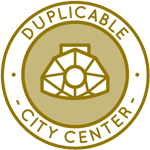 One Community is creating a sustainable world to benefit us all through a Duplicable and Sustainable City Center that is LEED Platinum certified/Sustainable, can feed 200 people at a time, provide laundry for over 300 people, is beautiful, spacious, and saves resources, money, and space:
One Community is creating a sustainable world to benefit us all through a Duplicable and Sustainable City Center that is LEED Platinum certified/Sustainable, can feed 200 people at a time, provide laundry for over 300 people, is beautiful, spacious, and saves resources, money, and space:
- Learn about this building and it’s function: Duplicable City Center Open Source Hub
This week, Ayushman Dutta (Mechanical Engineer) continued working on the Duplicable City Center hub connector spoke plate by conducting aluminum material bending characterization and researching different manufacturing processes. He corrected the bolt hole FEA analysis based on team feedback and attended the weekly meeting to discuss roadblocks and next action items. Ayushman researched heating aluminum sheet metal before bending, watched videos, and reviewed papers on performing the process effectively. He formatted a report documenting his findings and prepared reports for both the FEA hole analysis and the heating requirements of the hub connector spoke plate to provide complete manufacturing process documentation. This open-source Duplicable City Center project is creating a sustainable world to benefit us all. For more specifics, view the image below.
Nikhil Bharadwaj (Mechanical Engineer) continued working on the Duplicable City Center dome assembly by integrating the row 3 hub connector into the complete dome structure, cutting beams to create the required clearances and fit, and obtaining the beam cut angles while adding color-coded screenshots to the spreadsheet. He connected with Koushik to troubleshoot Inventor issues and planned subsequent activities with Nupur to finalize the row 3 assembly spreadsheet, manage the handoff, understand the procedure for drafting the assembly document, and obtain all related files. One Community’s Duplicable City Center is an example of creating a sustainable world to benefit us all. Here are a few pictures that showcase this work.
Sandesh Kumawat (Mechanical Engineer) continued working on the City Center Natural Pool and Eco-spa Designs for the Duplicable City Center in SolidWorks by adding and positioning a flange-bearing unit at the plate hinge line to enable rotation and lift of the cover panels, then modeling ground supports and a cinder-block base with an aircrete layer to carry the spa load. He organized subassemblies and mates so the bearing axis, plate interfaces, and supports align with the intended motion. In ANSYS, he defined materials for the plates, bearing housing, fasteners, and support stack, created named selections, and began meshing individual components, testing element sizes to balance contact fidelity at hinges with lower computation time. He set up boundary conditions for the support interfaces and prepared the first load cases for structural checks. All reference images, CAD files, and setup screenshots were added to the shared Dropbox folder for review. Discover One Community’s open source Duplicable City Center for creating a sustainable world to benefit us all. The following visuals illustrate highlights from this effort.
Srujan Pandya (Mechanical Engineer) continued working on the Duplicable City Center FEA analysis by finalizing the Version 2 load cases with nine cases spanning three datasets. He carefully updated the results sheet and transferred the verified data into the main report, discarding outdated Version 1 outputs. Srujan scheduled a verification meeting with Dipak and notified other team members about participation opportunities. He also ensured the report included all necessary images, references, and clear documentation for review. The Duplicable City Center demonstrates creating a sustainable world to benefit us all and open source solutions that can guide people. The images below illustrate aspects of this work.
Vineela Reddy Pippera Badguna (Mechanical Engineer) worked on the Duplicable City Center by reviewing the Earthbag Village stormwater management system to identify changes that could be incorporated into its design. She integrated relevant elements from previous work into the current project and studied sustainable walkway resources to gain a clearer understanding of rainwater catchment design. Vineela also reviewed multiple sources to understand rainwater catchment approaches, filtration techniques, and water catchment methods specific to the Earthbag Village. This open source open source Duplicable City Center project is creating a sustainable world to benefit us all. For more details, refer to the image below.
HIGHEST GOOD FOOD PROGRESS
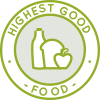 One Community is creating a sustainable world to benefit us all through Highest Good food that is more diverse, more nutritious, locally grown and sustainable, and part of our open source botanical garden model to support and share bio-diversity:
One Community is creating a sustainable world to benefit us all through Highest Good food that is more diverse, more nutritious, locally grown and sustainable, and part of our open source botanical garden model to support and share bio-diversity:
- Learn about the structures: Hoop House Hub | Aquapini & Walipini Open Source Hub
- See what we’ll be growing: Gardens & Hoop Houses | Large-scale Structures | Food Forest | TA
This week, the core team continued working on the Master Tools, Equipment, and Materials and Supplies List for the Large Garden (LG) and then began with the Botanical Garden (BG). The Team transferred all the TEMS to the BG from the LG and reviewed the Master Tools, Equipment, Materials/Supplies, which was necessary due to some tools not being required for the new document. The Highest Good Food initiative is a key component of One Community’s open source plans, focused on creating a sustainable world to benefit us all, and exemplifies the organization’s commitment through innovative design and implementation. Below are some images showcasing this work.
The core team also continued contributing to the Highest Good Food initiative. The team completed reviewing and updating all eight recipe pages, covering both vegan and omnivore versions of rice, pasta, potato, and sweet potato recipes. They also located information related to the prevalence of organic food and food diversity. The team continued reviewing materials on the transition kitchen, food self-sufficiency, food procurement and storage, nutrition calculations, the recipe build-out tool, and food bars. The core team also reviewed the report comparing off-grid and grid-tie systems. The Highest Good Food initiative plays a leading role in One Community’s open source platform by promoting sustainable and participatory development focused on creating a sustainable world to benefit us all. Below are images related to this project.
Chelsea Mariah Stellmach (Project Manager) continued her work on the Transition Food Self-sufficiency Plan. She worked with the core team to finalize the HG food reports. Jae assigned them to compile and check the initial ordering spreadsheet, cost analysis, and space requirements for 20 people with the ability to expand to 50 for the first two to three months. Chelsea also worked on adding more cross-page links in the Frequently Answered Questions section and rewording parts of the reports to align with the current use of the recipe build-out tool. As an essential aspect of One Community’s open source goals, the Highest Good Food initiative supports creating a sustainable world to benefit us all. Below are some images showcasing this work.
Dirgh Patel (Mechanical Engineer) continued assisting with the Climate Battery design updates. He revised sections of the report to simplify the explanations of pressure and thermal simulation equations for easier reader understanding, edited the area and heat gain calculation explanations, clarified stress-strain assumptions and results, and added definitions for all symbols in the solar radiation heat gain section. Dirgh calculated the total solar radiation heat gain for each month and determined the cooling airflow required to maintain 30 °C, including average cooling power, required flow in cubic meters per second, cubic feet per minute, air changes per hour, and air volumes per minute. He then created a Google Sheet with two tables, the first showing the monthly solar radiation heat gain calculations for each greenhouse surface and the second presenting airflow rates needed to maintain 30 °C. Dirgh calculated the cooling airflow required to maintain 24 °C, again presenting monthly results with energy, power, airflow, CFM, ACH, and volumes per minute. One Community’s open-source mission is powerfully reflected in the Highest Good Food initiative, which is focused on creating a sustainable world to benefit us all. The following visuals illustrate highlights from this effort.
Faeq Abu Alya (Architectural Engineer) continued developing house designs for the Earthbag Village 4-dome cluster project. He focused on completing and continuing design work for homes in the Southwest and Southeast, ensuring that materials were consistently enhanced and appearances improved throughout the models. The tasks included refining design details, applying updated materials, and enhancing visual elements to achieve a more accurate and clear presentation of the intended standards. The Earthbag Village is the first of seven planned villages to be constructed as part of One Community’s open source model for creating a sustainable world to benefit us all, and it is closely tied to the Highest Good Food initiative. Below are some pictures related to this work.
Gayatri Pandkar (Architect) continued contributing to the Highest Good Food initiative. She worked on refining the Walipini structure, focusing on adjustments to improve both functionality and integration with the surrounding environment. Gayatri developed the design for the pathways, introducing stepping stones that create a defined circulation route and connect directly to wooden and stone seating areas intended for rest and gathering. To enhance the landscape and create a stronger connection with its setting, she incorporated shrubs and plants that help the design blend naturally into the desert botanical garden context. Gayatri also began writing the report for the people spaces, using images from the SketchUp model to illustrate the work. The Highest Good Food initiative is a key part of One Community’s open source platform, focused on sustainable and participatory development while creating a sustainable world to benefit us all. Below are visuals highlighting this work.
Jay Nair (BIM Designer) continued on Aquapini and Walipini Planting and Harvesting. He worked on standardizing the documentation for the lighting energy calculations of Walipini 1 to align with formatting requirements used on the project webpage. This included adjusting headings, spacing, and layout for clarity and consistency, while ensuring the content remains accurate and accessible for future updates and publication. The Highest Good Food initiative is a key part of One Community’s open source platform, focused on sustainable and participatory development while creating a sustainable world to benefit us all. See below for pictures related to this work.
Keerthi Reddy Gavinolla (Software Developer) continued working on the Highest Good Food page. She continued working on the Soil Amendment and Initial Off-grid Site Preparation page. She made changes as per Jae’s review, added headings, content, and videos where required, and formatted the headings while correcting mistakes. Keerthi submitted the updated version to Jae for review and also completed her admin work for the week. Built on One Community’s open source foundation, the Highest Good Food initiative is dedicated to creating a sustainable world to benefit us all, empowering communities through self-sustaining systems. View examples of her work in the pictures below.
Nitin Parate (Architect) continued contributing to the Highest Good Food. The work was centered on updating the 3D files of the Aquapini and Walipini site. He has completed most of the modeling. The current focus is on surface building and applying minor corrections to refine the model, improve accuracy, and ensure it aligns with project requirements. He maintained coordination through discussions with Shivangi over messages to track progress and align on project tasks effectively. The Highest Good Food initiative is a key part of One Community’s open source platform, promoting regenerative and participatory development while creating a sustainable world to benefit us all. Images below showcase his contributions.
Pallavi Deshmukh (Software Engineer) continued working on the Aquapini and Walipini Planting and Harvesting pages. She created new content for blog 652 and worked with teammates by reviewing their suggestions and incorporating feedback to produce a clear and consistent final version. Pallavi applied Jae’s feedback and finished adding Zenapini #2 content from Silin to the website, then moved on to Walipini #2, where she incorporated Junyi Shi’s work with updated text, links, and images for the webpage. In alignment with One Community’s open source objectives, the Highest Good Food project integrates the concept of creating a sustainable world to benefit us all into a larger vision of regenerative living. Her contributions are highlighted in the collage below.
Shivangi Varma (Volunteer Architectural Designer And Planner) continued contributing to the Highest Good Food. She focused on planning the schedule for the graphics for the three pages, continued to coordinate with the architect volunteer for the graphics, and continued to edit the contents and the text for the 6 structures of the Planting and Harvesting page. The Highest Good Food initiative plays a leading role in One Community’s open source platform by promoting sustainable and participatory development focused on creating a sustainable world to benefit us all. Below are visuals highlighting this work.
HIGHEST GOOD ENERGY PROGRESS
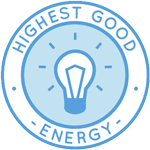 One Community is creating a sustainable world to benefit us all through Highest Good energy that is more sustainable, resilient, supports self-sufficiency and includes solar, wind, hydro and more:
One Community is creating a sustainable world to benefit us all through Highest Good energy that is more sustainable, resilient, supports self-sufficiency and includes solar, wind, hydro and more:
- Learn about the open source sustainable-energy foundations: Solar, Hydro, and Wind
- Explore our research into the most sustainable products and companies for saving water and energy: Insulation, Eco-laundry, Lightbulbs and Light Bulb Companies, Doors and Door Companies, Windows and Window Companies, Toilets, Faucets and Faucet Accessories, Urinals, and more.
This week, Shravan Murlidharan (Electrical Engineer) continued supporting the Highest Good Energy initiative. continued supporting the Highest Good Energy initiative. He focused on reorganizing and refining the One Community Solar webpage to improve clarity and usability. His main effort was optimizing the presentation of tables and charts so that information is structured logically and easier to follow. Revisions were made across the webpage to align related content more effectively, ensuring that data and visuals are consistent and support straightforward interpretation. One Community’s open source mission is powerfully reflected in the Highest Good Energy initiative, which supports creating a sustainable world to benefit us all as a model for global impact. Images below showcase this work.
HIGHEST GOOD EDUCATION PROGRESS
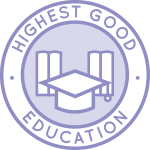 One Community is creating a sustainable world to benefit us all through Highest Good education that is for all ages, applicable in any environment, adaptable to individual needs, far exceeds traditional education standards, and more fun for both the teachers and the students. This component of One Community is about 95% complete with only the Open Source School Licensing and Ultimate Classroom construction and assembly details remaining to be finished. We’ll report on the final two elements to be finished as we develop them. With over 8 years of work invested in the process, the sections below are all complete until we move onto the property and continue the development and open sourcing process with teachers and students – a development process that is built directly into the structure of the education program and everything else we’re creating too:
One Community is creating a sustainable world to benefit us all through Highest Good education that is for all ages, applicable in any environment, adaptable to individual needs, far exceeds traditional education standards, and more fun for both the teachers and the students. This component of One Community is about 95% complete with only the Open Source School Licensing and Ultimate Classroom construction and assembly details remaining to be finished. We’ll report on the final two elements to be finished as we develop them. With over 8 years of work invested in the process, the sections below are all complete until we move onto the property and continue the development and open sourcing process with teachers and students – a development process that is built directly into the structure of the education program and everything else we’re creating too:
- Program Overview: Education Open Source Hub
- How the components work together in designing human orchestrated eco-abundance: How to use the Education for Life Program
- Lesson Plans for Life – Lesson Plans How-to
- Foundations of Outstanding Leaders, Teachers, and Communicators
- Curriculum for Life
- Teaching Strategies for Life
- Learning Tools and Toys for Life
- Evaluation and Evolution
This week, Anuneet Kaur (Administrator) continued contributing to the Highest Good Education software platform by creating Figma design elements and refining the overall visual layout, supporting One Community’s dedication to Highest Good Future Building. She updated the project manager dashboard using Figma according to Harshitha’s feedback. She incorporated design adjustments to improve usability and ensure consistency with project standards. She focused on researching resources for the most sustainable Flooring, reviewing scholarly articles, and compiling relevant statistics for the graphic process. Anuneet ensured that all members were included in the live blog task and identified any who were missing. Additionally, she completed the drafting of the content and selecting images for the Highest Good Education Program Licensing and Accreditation webpage. She also reviewed the most sustainable research work of Yulin infographic and provided the feedback. Her administrative contributions included editing summaries and collages for the Highest Good Society team, Highest Good Education, and the core team, while reviewing fellow admins’ submissions for accuracy and completeness. The One Community model of creating a sustainable world to benefit us all, exemplified by sustainably built classrooms like these, fosters lasting impact on a global scale. Her recent contributions are featured in the collage below.
Dashaarna Srinivasa (Project Engineer) began developing the Highest Good Education platform, detailing deliverables. She developed the Ultimate Classroom WBS and also coordinated with Ketsia, Baraka, Fangting, Suprasanna, and Ananya to align progress, including a separate meeting with Fangting to explain her work and complete the handoff of responsibilities. In addition, she edited Blog #652 by finalizing the summaries for the Duplicable City Center section, created collages to showcase the team’s work, and incorporated changes requested during the week to ensure the content was accurate and complete. The One Community model of creating a sustainable world to benefit us all, exemplified by sustainably built classrooms like these, drives lasting impact on a global scale. Her recent contributions are featured in the collage below.
Harshitha Rayapati (Program Manager) continued advancing the Highest Good Education platform by detailing deliverables, developing Figma designs, and expanding the visual layout of the student dashboard. She collaborated with Vivek to review Deliverable 0 requirements and identify gaps in code, assigned tasks, and informed stakeholders. She worked with Raahul and Srushti to assign, clarify, and add tasks for Phase 4. Harshitha cleaned up Figma action items for various profiles to prepare them for inclusion with the PRs and assigned priorities for building out the teacher dashboard Figmas. She provided inputs to Anuneet’s designs for the Project Manager Dashboard. She reviewed work items and assisted Ravi, Srushti, and Vivek with troubleshooting their respective action items. Additionally, she worked on compiling the weekly blog update, reviewed the Housing’s weekly progress, edited the blog page, created a collage and made changes based on feedback given by the admin team. The One Community model of creating a sustainable world to benefit us all, exemplified by sustainably built classrooms like these, advances meaningful global change. The collage below highlights her recent contributions.
Ravi Kumar Sripathi (Software Engineer) continued developing the Highest Good Education software platform by creating Figma designs and refining the Build Lesson Plan module, which enables students to transform their saved interests into weekly learning plans through guided steps. He created editable wireframes for student-facing dashboards. The Analytics section includes visualizations such as heatmaps, radar charts, line graphs, and bar charts to show strengths, gaps, performance trends, and the effect of teaching and life strategies. The Knowledge Evolution view uses education molecules with dynamic atoms to track mastery and allow saving of interests. The My Saved Interests dashboard provides options for organization, prioritization, and strategy selection. The Evaluation Results section gives a breakdown of grades, assignments, and feedback to help students track progress and engage with teacher input. These updates strengthened both the functionality and user experience of the platform, enhancing the One Community model of creating a sustainable world to benefit us all as a path to lasting global impact. Below are images related to his work.
HIGHEST GOOD SOCIETY PROGRESS
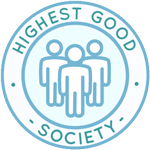 One Community is creating a sustainable world to benefit us all through a Highest Good society approach to living that is founded on fulfilled living, the study of meeting human needs, Community, and making a difference in the world:
One Community is creating a sustainable world to benefit us all through a Highest Good society approach to living that is founded on fulfilled living, the study of meeting human needs, Community, and making a difference in the world:
- Read the Highest Good society overview: Highest Good Society
- Learn about the model for fulfilled living and sharing: A Day in the Life
- Learn about the 4 economic models: RBE | For-profit | Non-profit | Entrepreneurship
- Learn about our open source community collaboration and management software: The Highest Good Network
This week, the core team completed over 50 hours managing volunteer work reviews, handling emails, overseeing social media accounts, supporting web development, identifying new bugs, integrating bug fixes for the Highest Good Network software, and interviewing and onboarding new volunteer team members. They also produced and integrated the video above, highlighting how creating a sustainable world to benefit us all serves as the foundation of One Community’s broader mission. The following images showcase highlights of this work.
Govind Sajithkumar (Project Manager) continued focusing on analytics and content management for Meta’s Facebook and Instagram channels. He handled the content cycle for the Facebook and Instagram channels by preparing, scheduling, and publishing a new set of posts. He populated the content calendar and logged all post information and metadata into the Open Source spreadsheet. Govind also completed the weekly update for the social media analytics spreadsheet by collecting the most recent data and updating the master spreadsheet with audience and engagement statistics for both platforms. Additionally, he completed PR Review Team Management by modifying a WordPress site with the team’s weekly summary and collage, filling the PR Review Team Table, and updating the Highest Good Network PR spreadsheet. He submitted his admin feedback table, which further supports One Community’s mission of creating a sustainable world to benefit us all. The images below highlight key aspects of his contributions.
Jaiwanth Reddy Adavalli (Project Manager) continued developing the Job Applicants page and key components of the Highest Good Network Phase 2 and Phase 4 dashboards, including the PR Team analytics section. He worked on the Application Page by editing the design and action items for several components. He tracked updates in software team management documents to support task management. Jaiwanth also tested multiple pull requests in the Highest Good Network software. As a member of the pull request review team, he reviewed submissions from the volunteer team assigned to him. This work supports One Community’s commitment to creating a sustainable world to benefit us all. The images below highlight his contributions.
Rajrajeshwari Gangadhar Sangolli (Data Analyst) continued working on Google Ads management and strategy evolution. She completed campaign analysis, applied Google recommendations to improve six responsive search ads, add broad match keywords, and remove redundancies, and created four new ads for Highest Good Housing. A total of 18 new ad groups were set up, including seven across campaigns and eleven in the new Highest Good Society campaign, while the Highest Good Energy campaign was paused. A new Highest Good Economics campaign with three ad groups was launched, goals were set, budgets allocated, and ad strength reviewed. Work continued on the weekly website for 11 volunteers with content review, SEO updates, collages, and image attribution. Additional tasks included preparing onboarding documentation, certification study, creating and managing test accounts, and reviewing the site map. Product testing also began, focusing on improving data charts by providing solutions, offering suggestions, and identifying issues during PR testing to ensure readability and proper functionality after merging. A total of eight PRs were tested and documented, including one flagged for merging, with clarifications reviewed through training videos. This project supports One Community’s commitment to creating a sustainable world to benefit us all. The images below highlight key aspects of her work.
ADMINISTRATION TEAM
The Administration Team’s summary, which covers their work on the Highest Good Network, was managed by Prudhvi Marpina (Data Analyst) and includes Ashutosh Mishra (Software Engineer), Divanshu Bakshi (Team Admin), Georgina George (Business Intelligence Analyst), Indra Anuraag Gade (Software Engineer and Team Administrator), Keerthana Chitturi (System Administrator), Mridul Bhushan (Volunteer Project Strategy Analyst and Team Administrator), Neeharika Kamireddy (Data Analyst), Olimpia Borgohain (Data Analyst and Team Administrator), Olawunmi “Ola” Ijisesan (Administrative and Management Support), Rachna Malav (Data Analyst), Rajeshwari Bhirud (Administrator), Rishi Sundara (Quality Control Engineer and Team Administrator), Rishitha Adepu (Administrator), Sai Suraj Matta Veera Venkata (Business Data Analyst), Samhitha Are (Administrator), Sudarshan Raju Chintalapati Venkata (Data Analyst) and Yagna Reddy Badvel (Data Analyst and Team Administrator). The Administration Team supports the Highest Good Network, a tool designed to manage and objectively measure progress while building open-source solutions for global sustainability. Through their focus on administrative support, documentation, testing, training, recruiting, analytics, and content management, the team directly contributes to creating a sustainable world to benefit us all and One Community’s mission of building a replicable model for a sustainable world.
This week, Ashutosh completed backlog Timelog activities, commented on entries, flagged incorrect tags, and began automating data capture with Selenium for faster analysis while also working on chatbot-related document preparation. Divanshu prepared and executed test cases, validated functionality, managed task assignments, analyzed mock data with graphs, explored API integrations, researched Mastodon, and supported documentation and team communications. This work contributes to One Community’s commitment to creating a sustainable world to benefit us all. Georgina created and cross-posted Reddit content, reviewed Skye’s weekly summary, provided feedback to new admins, and analyzed Reddit dashboard data for reach tracking. Indra prepared Blog #652 for the Code Crafters team, scheduled and logged Twitter/X posts, reviewed the Social Media Tracker, created a posts log with formulas and dropdowns, advanced analytics dashboard development to about 70–75% completion, and generated AI music for prompts 59–82 using SUNO. This effort reflects One Community’s dedication to creating a sustainable world to benefit us all. Keerthana completed administrative responsibilities, prepared the weekly blog, finalized documentation, and carried out Phase 3 testing by comparing platform pages with Figma designs while collaborating with Samhitha on action items. Mridul managed Team Moonfall’s summaries, applied SEO revisions with feedback from Rishitha, Keerthi, and Sara, updated images and alt text, reviewed admin training materials, checked HGN tracking sheets, and began assigning tasks for the Phase II tracking system outline with Sudarshan. This project supports One Community’s mission of creating a sustainable world to benefit us all. Neeharika reviewed management documents and PR dashboards, followed up with team members on progress, tested pull requests, and completed her admin responsibilities, including reviewing two admins’ work. Ola organized the administrative workspace, monitored and documented HGN spreadsheet data for quality, completed weekly file documentation, and prepared the weekly progress report. This work is part of One Community’s larger vision of creating a sustainable world to benefit us all.
Olimpia managed senior admin responsibilities by monitoring task completion, resolving past comments, flagging issues requiring warnings, informing Jae, analyzing LinkedIn analytics data in Excel, creating graphs, and adjusting a Word document as requested. Rachna had a slower week without new interviews to schedule, so she focused on catching up on past tasks, emails, and comments. This contribution advances One Community’s goal of creating a sustainable world to benefit us all. Rajeshwari continued as Blog #652 administrator, reviewed summaries, added feedback, updated Step 2 for Binary Brigade, edited the WordPress private blog, completed the HGN questionnaire, updated the feedback log, and uploaded the fixed PDF. Rishi reviewed completed PRs, labeled high-priority items, followed up with contributors on Slack, merged all blogs into Blog #652, completed SEO work, tested assigned PRs, and adjusted project hours for teammates. This progress highlights One Community’s dedication to creating a sustainable world to benefit us all. Rishitha supported Mridul and Sudarshan in identifying and correcting mistakes in the weekly blog, updated bios, followed up for missing information, maintained activity on Threads by uploading images and videos, and reviewed her weekend tasks. Sai Suraj advanced the Social Media Analytics Master Dashboard by structuring the monthly tab, creating KPI cards, validating data, building multiple charts, adding a Top 10 posts table with ranking and clickable links, and on the admin side, compiled reports, created a summary for a late submission, edited and formatted the webpage with SEO updates, organized and prepared images, created collages, and published the updated webpage. This task plays a role in One Community’s mission of creating a sustainable world to benefit us all. Samhitha reviewed blogs by Sudarshan and Prudhvi, provided detailed feedback, performed Phase 3 testing across multiple account levels, updated the spreadsheet with action items, and collaborated with Keerthana to add new ones. This step adds to One Community’s commitment to creating a sustainable world to benefit us all. Sudarshan worked on the Alpha Software Team blog, reviewed Phase 2 PRs with attention to UX/UI and cleanup, provided feedback, and added missing tasks to the Phase 2 list. Yagna validated Phase 1 Master Dashboard components, tested Active, New, and Deactivated Volunteers, identified inflated totals and role exclusions, reviewed summaries and task charts, documented issues and suggestions, and consolidated findings into the updated Excel report. To learn more about how this work contributes to creating a sustainable world to benefit us all, visit the Highest Good Society and Highest Good Network pages. Highlights of the team’s contributions are shared in the collage below.
GRAPHIC DESIGN TEAM
The Graphic Design Team’s summary includes Qinyi Liu (Graphic Designer) and Yulin Li (Graphic Designer), who focused this week on creating graphic designs that support creating a sustainable world to benefit us all.
This week, Qinyi created the weekly website announcement, edited images, designed posters, and expanded character artwork with ChatGPT, supporting the vision of creating a sustainable world to benefit us all. Yulin revised infographics and announcements, managed assets, shared collaboration updates, and joined review discussions, supporting the vision of creating a sustainable world to benefit us all. Their combined efforts highlight creating a sustainable world to benefit us all. See the Highest Good Society page and the collage below for examples of their work.
HIGHEST GOOD NETWORK PROGRESS
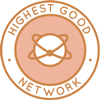 One Community is creating a sustainable world to benefit us all through open source Highest Good Network® software that is a web-based application for collaboration, time tracking, and objective data collection. The purpose of the Highest Good Network is to provide software for internal operations and external cooperation. It is being designed for global use in support of the different countries and communities replicating the One Community sustainable village models and related components.
One Community is creating a sustainable world to benefit us all through open source Highest Good Network® software that is a web-based application for collaboration, time tracking, and objective data collection. The purpose of the Highest Good Network is to provide software for internal operations and external cooperation. It is being designed for global use in support of the different countries and communities replicating the One Community sustainable village models and related components.
- Learn about our open source community collaboration and management software: The Highest Good Network
This week, the core team continued working on the Highest Good Network software by completing and confirming several pull request fixes. Confirmed fixed PRs included migrating src/components/JobCCDashboard CSS to module CSS #3641, correcting the Project page rendering issue #3703, updating Hours wording text #3676, fixing the refresh redirection issue on the User Management page #3704, resolving the issue of pages refreshing back to the dashboard #3706, creating a new summary text header #3235, fixing the Tasks Table User Status column #3653, handling null comparison for start and end dates #1330, and ensuring new accounts created in User Management no longer appear at the top of the list #1465. This effort contributes to One Community’s focus on creating a sustainable world to benefit us all.
Items not fixed included the community portal activity comment section #3590 returning “PAGE NOT FOUND,” job search tooltips #3591, report graph and page issues #3520, migration of src/components/HGNForm CSS to module CSS #3640, migration of src/components/HGNHelpSkillsDashboard, HGNSkillsDashboard, and LandingPage CSS to module CSS #3643, migration of src/components/LBDashboard CSS to module CSS #3644, migration of src/Dashboard, src/EducationPortal, and src/FeedbackModal CSS to module CSS #3639, and LB platform messaging #3476+1366. They also reviewed assigned badges for “Tester One” and logged 5 hours, recording the same issues with data and badge counts for the “New Max” badge as noted in the previous week. See the Highest Good Society and Highest Good Network pages for more on how this work strengthens creating a sustainable world to benefit us all.
ALPHA SOFTWARE DEVELOPMENT TEAM
This week Lin Khant Htel (Frontend Software Developer) managed the Alpha Team summary, the team includes Carlos Martinez (Software Developer) and Nikita Kolla (Full Stack Developer). The Highest Good Network software is a key part of creating a sustainable world to benefit us all, helping track and measure progress toward creating a sustainable world. The software supports social architecture, construction, production, and maintenance processes that contribute to creating sustainable and resilient ecosystems. Designed to be portable and scalable, the Highest Good Network software is well suited for off-grid and sustainable living communities. This project reflects One Community’s open source commitment to advancing the idea of creating a sustainable world to benefit us all.
Lin reviewed PR #1674, tested the code with Postman API, checked weekly summaries, photos, and videos submitted by team members, and performed management responsibilities. This work is a part of One Community’s pathway toward creating a sustainable world to benefit us all. Carlos focused on the blue squares description pull request, addressed merge conflicts caused by updates to the development branch, worked on the events page to ensure that searching and filtering functions operated correctly, and migrated all CSS to module CSS for the events page to maintain consistent styling without affecting other components. Nikita worked on the task “Total Org Summary: Fix stats accuracy (NEW),” which addressed discrepancies between statistics displayed on the Total Org Summary page and the Reports page, resolved issues with the “npm install” process for the frontend that were blocking progress, and recreated the data mismatch issue to better understand the root cause by writing informal tests that defined the expected behavior and a working goal for resolving the problem. See the Highest Good Society and Highest Good Network pages for more on how this contributed to creating a sustainable world to benefit us all. See the collage below to view the team’s work.
BINARY BRIGADE SOFTWARE DEVELOPMENT TEAM
The Binary Brigade Team’s summary, presenting their work on the Highest Good Network software, was managed by Nikhil Routh (Software Engineer) and included Amalesh Arivanan (Software Engineer), Ramsundar Konety Govindarajan (Software Engineer), Harsha Rudhraraju (Software Engineer), Sourabh Bagde (Software Developer), Srushti Patel (Software Developer), Soham Sharma (Software Engineer), Manvi Kishore (Software Engineer), Taariq Mansurie (Full-Stack Developer), and Rohit Mamidi (Software Engineer). The Highest Good Network software is our tool for managing and objectively measuring progress, ensuring that all contributions are tracked, aligned with our mission, and creating a sustainable world to benefit us all.
This week, Amalesh worked on fixing an issue with incorrect team codes displayed in the Weekly Summaries Reports page by aligning the report view to reflect updated team codes after reactivation of accounts, tested and documented the work with screenshots and videos, uploaded them to Dropbox, and tracked time with the HGN timer while completing onboarding steps to maintain tool access. This effort strengthens One Community’s commitment to creating a sustainable world to benefit us all. Harshavarma worked on the “Cleanup and completion for Application Page/Function” task by reviewing and verifying PRs 4001, 4048, 3937, 3913, 4002, 4033, 4055, and 3886, confirming functionality for several, approving or requesting merges, reporting issues such as incomplete graph lines, responsiveness problems, and dark mode inconsistencies, and updating the PR review sheet. This work contributes to One Community’s commitment to creating a sustainable world to benefit us all. Manvi attempted to test the Pinterest auto-posting functionality but encountered permission, Node, and CORS-related issues blocking login attempts from the local environment, which were later resolved. Nikhil worked on migrating legacy CSS files to CSS Modules for components including LeaderBoard, Badge, TeamOrgLocations, and Teams, converting files, updating imports and JSX className attributes, addressing issues in PRs 3777, 3770, and 3222, making updates for PR 3760, reviewing PR 3768, reviewing older pull requests, and delegating tasks across the team. This effort reflects One Community’s dedication to creating a sustainable world to benefit us all. Ram focused on fixing WBS task category handling across Add and Edit flows by treating project detail as the source of truth, ensuring proper syncing after data loads, and opening PR 4086 for the category fix and PR 1742 for a failing test related to the Task Edit modal. This work is part of One Community’s larger vision of creating a sustainable world to benefit us all.
Rohit documented the badge validation workflow in detail, finalized proof-of-concept scripts to simulate time-based and event-driven badge conditions, enhanced scripts to handle edge cases, and established a reusable automation framework to reduce manual checks. This development reinforces One Community’s commitment to creating a sustainable world to benefit us all. Sourabh worked on the Slashdot integration by building an auto-poster panel with smart-fill helpers, validation, copy-to-clipboard buttons, and a preview, integrated it into the announcements tab, and added consistent UI styling, though the task remains in progress. This task plays a role in One Community’s mission of creating a sustainable world to benefit us all. Srushti worked in Figma on the Assign Lesson Plan UI, creating the Assessment Forms Library component with a grid layout for template cards, preview and duplicate actions, a customization panel, and preparing the layout for the upcoming Form Editor. This step adds to One Community’s commitment to creating a sustainable world to benefit us all. Taariq finalized features for accessing and unarchiving projects, resolving issues with list updates and modal behavior, submitting pull requests, addressing merge conflicts, ensuring passing tests, sharing a demo video, and improving performance, while also fixing weekly summary email merge conflicts, troubleshooting a MongoDB storage quota error, and documenting findings. Zoha explored the codebase across frontend and backend to understand its structure and claimed a task from the “HGN Phase I Bugs and Needed Functionalities” document by adding their name and providing an estimated timeline. See the Highest Good Society and Highest Good Network pages for more about how this relates to creating a sustainable world to benefit us all. The collage below shows images of their work.
BLUE STEEL SOFTWARE DEVELOPMENT TEAM
This week, the Blue Steel Software Team, working on the Highest Good Network software, was managed by Divanshu Bakshi (Product Manager) and includes Linh Huynh (Software Engineer), Felix Huang (Software Engineer), and Sheetal Mangate (Software Engineer). Felix fixed the refresh issue and ensured that the task category was made uneditable by users as intended. During testing, he identified that updating the parent category did not save changes, creating a consistency issue when verifying alignment between task categories and parent projects within the broader goal of creating a sustainable world to benefit us all. He recorded two videos to review both the implemented fix and the newly identified bug, requesting clarification on how to proceed. He also reproduced the overlapping text issue and determined it was not reproducible, though he identified a misalignment problem and informed Jae for guidance. This action furthers One Community’s vision of creating a sustainable world to benefit us all. Linh worked on backend unit tests for the taskEditSuggestionController by analyzing logic, identifying dependencies on the userProfile and wbs models, and configuring Jest mocks to isolate database interactions. He wrote test cases for createOrUpdateTaskEditSuggestion to validate both success and error conditions, confirmed correct query structures and response handling, and added coverage for findAllTaskEditSuggestions and deleteTaskEditSuggestion, including scenarios for counts, result lists, failed deletions, and exception handling. This work is a part of One Community’s pathway toward creating a sustainable world to benefit us all. All test cases passed, mocks were cleared between runs to prevent contamination, and preparations were made for the pull request description documenting these updates. Sheetal worked on implementing Reddit OAuth2 login and post submission using access tokens for API authentication. She added logic to apply refresh tokens when access tokens expired, automated the post submission process, and ensured authentication flow stability. Work also progressed on extending support for multiple post types, including text and link submissions as part of advancing the mission of creating a sustainable world to benefit us all. See the Highest Good Society and Highest Good Network pages for more on how this relates to our mission of creating a sustainable world to benefit us all. The collage below shows images of their work.
CODE CRAFTERS SOFTWARE DEVELOPMENT TEAM
The Code Crafters Team, covering their work on the Highest Good Network software, was managed by Sai Shekhar Reddy Moola (Software Engineer) and includes Ajay Naidu (Software Engineer), Akshith Kumar Reddy Balappagari Gnaneswara (Software Engineer – Full Stack), Benitha Sri Panchagiri (Software Engineer), Chaitanya Swaroop Kumar Allu (Software Engineer), Hemanth Chimakurthi (Software Engineer), Juhitha Reddy Penumalli (Software Engineer), Rohith Mallipudi (Software Engineer), Sphurthy Satish (Software Engineer) and Vivek Chandra (Software Engineer). The Highest Good Network software is how we’ll manage and objectively measure our process for establishing abundant community systems through our social architecture, construction, production, and maintenance processes, and support widespread and lasting eco-lifestyle access. This effort exemplifies One Community’s open source commitment to creating a sustainable world to benefit us all to a more regenerative and thriving future.
This week, Ajay implemented a feedback modal triggered by the feedback button, defining the modal structure, creating and styling input fields, buttons, a five-star rating control, and a multiline comment area with character limits. He wired state and validation to capture ratings, connected the modal trigger to the page, performed basic functional tests, documented component properties, created a new branch, and pushed changes to the repository for review. This effort strengthens One Community’s commitment to creating a sustainable world to benefit us all. Akshith contributed to the HGN Rest App and HighestGoodNetwork App by reviewing and testing multiple pull requests, including PRs #1741, #1743, #4090, #4092, #4050, #4097, #4065, #4072, #4074, #4026, #4089, and #4025, and also spent time reviewing development documentation. This outcome represents One Community’s ongoing dedication to creating a sustainable world to benefit us all. Benitha resolved 106 persistent import and compile errors by fixing exports and references across reducers, actions, and components, bringing the project’s overall error count to zero. Chaitanya focused on Google Groups access management by researching the Google Admin SDK, creating a simulation based on existing integrations, developing backend and database support, enhancing the UI with validation and error handling, and improving overall code quality. This work contributes to One Community’s commitment to creating a sustainable world to benefit us all. Hemanth validated numerous pull requests, including PRs #4022, #4074, #4082, #4089, #4091, #4093, #4094, #4098, #4103, and #4105, confirming correct rendering, styling, routing, and behavior across dashboards, forms, modals, summaries, announcements, and charts, while flagging an issue with the Injury Tracking page.
Juhitha created a Donut Chart for Project Status, resolved merge conflicts, fixed yarn.lock issues, addressed backend errors, and ensured compatibility between frontend and backend components. This effort reflects One Community’s dedication to creating a sustainable world to benefit us all. Rohith performed code reviews and documentation work, tested CSS module changes in PR #4034, examined PR #4055 for improvements to the Collaboration landing page, and coordinated with teammates to progress the review process. Sai Moola completed a horizontal bar graph for tool and equipment utilization and downtime by fixing the backend schema, verifying data in Postman, researching access control, and submitting a pull request. This project supports One Community’s mission of creating a sustainable world to benefit us all. Sphurthy implemented dark mode across multiple pages and components by integrating Redux state, applying conditional CSS, updating reusable elements, and ensuring consistent styling for readability and contrast. Vivek concentrated on authentication and profile view tasks by reviewing documentation, working with the local database, addressing deliverable issues for different user profiles, reviewing migrations, clarifying requirements, and examining project intent, user structures, stories, and code for related education modules. These contributions strengthen One Community’s open source mission and commitment to creating a sustainable world to benefit us all. See below for pictures of the team’s work.
DEV DYNASTY SOFTWARE DEVELOPMENT TEAM
The Dev Dynasty Team’s summary, covering their work on the Highest Good Network software, was managed by Zhifan Jia (Software Engineer) and includes Adithya Cherukuri (Volunteer Software Engineer), Deekshith Kumar Singirikonda (Developer), Dharmik Patel (Software Engineer), Manvitha Yeeli (Software Engineer), Mohan Satya Ram Sara (Software Engineer), Nahiyan Ahmed (Full-Stack Software Developer), Neeraj Kondaveeti (Software Engineer), Saicharan Reddy Kotha (Software Engineer), Shraddha Shahari (Software Engineer), Vamsi Krishna Rolla (Software Engineer), and Vamsidhar Panithi (Software Engineer), Varsha Karanam (Software Engineer). The Highest Good Network software is how we’ll manage and objectively measure our process for highest good future building through our social architecture, construction, production, and maintenance processes to support widespread and lasting eco-lifestyle access. This progress supports One Community in creating a sustainable world to benefit us all.
This week Nahiyan reviewed PR4038 by examining changes to the codebase, verifying alignment with project standards, testing functionality for expected results, and assessing impacts on maintainability, performance, and readability while providing feedback on potential issues. This work is part of One Community’s larger vision of creating a sustainable world to benefit us all. Shraddha worked on fixing lint issues in PeopleTasksPieChart.test.jsx, analyzing errors, modifying related files, and implementing a fix that is still being tested, while also addressing PRs 2210, 2266, and 3492 by resolving conflicts, investigating build failures, and troubleshooting issues related to Node 20, eslint, vite:esbuild, and jest:esbuild. This development reinforces One Community’s commitment to creating a sustainable world to benefit us all. Vamsi enhanced feedback management and organizer controls by implementing filters and sorting options for hosts, adding a toggle in event settings for review requests, creating notices for participants when reviews are disabled, and including a “Contact Admin” link, followed by testing and refinements to ensure host-only feedback, filtering, and toggling functioned correctly. This task plays a role in One Community’s mission of creating a sustainable world to benefit us all. Manvitha resolved review comments related to the logo, fixed merge conflicts in PRs 3870, 4001, 3647, and 1454, implemented event rescheduling functionality including sending participant emails, and began integrating polling options through email while troubleshooting an unauthorized request error. Saicharan completed the Phase-2 Project Status Donut Chart by creating and pushing frontend and backend PRs with detailed descriptions, testing instructions, screenshots, and explanations of the React component with Chart.js, CSS Modules, backend model, service, and controller logic, connecting the frontend to the API, validating functionality with filters, and refining PRs after feedback. This step adds to One Community’s commitment to creating a sustainable world to benefit us all.
Deekshith strengthened wishlist functionality for the listing and bidding platform by creating secure backend APIs with ownership and validation rules, implementing createWishlist, addListingToWishlist, and removeListingFromWishlist functions that validate user authentication, deduplicate listings, and ensure proper ownership and existence checks. This work is a part of One Community’s pathway toward creating a sustainable world to benefit us all. Adithya contributed to Phase 3 tasks and analytics features for HGN Software Development by resolving dependency conflicts, updating yarn.lock, merging from development, verifying component placement for the Social and Recreational Management page and Event Popularity Analytics landing page, completing frontend and backend development for the Popularity by Timeline Chart, and submitting a pull request awaiting review. This progress demonstrates One Community’s mission of creating a sustainable world to benefit us all. Neeraj reviewed potential new tasks, examined previously completed work for bugs or misalignments, and submitted a self-summary with the requested information. Mohan implemented timelog usage tracking by populating databases with mock events, optimizing queries, enabling live updates via WebSocket with fallbacks, linking event creation to backend confirmation, handling idle and network interruptions, and improving UI confirmations for accurate logging. This effort strengthens One Community’s commitment to creating a sustainable world to benefit us all. Prasanth drove Phase 2 document finalization by reviewing over 50 pages, testing PRs locally, identifying issues, creating new action items—especially around modular CSS—coordinating with developers via Slack, and proposing workflow and UI/UX improvements to strengthen Phase 2 deliverables. Vamsidhar resolved merge conflicts and tested PR3040, implementing a feedback modal with a rating system, comment field, duplicate prevention, Node.js version updates, Jest-to-Vitest migration, accessibility fixes, and CI workflow updates, achieving 1945 of 1951 passing tests and preparing the PR for deployment. This outcome represents One Community’s ongoing dedication to creating a sustainable world to benefit us all. Varsha created and submitted a questionnaire form within the collaboration module, integrated video links, improved state management and validation, and transitioned global CSS to modular CSS for various components, including the event no-show chart, resolving related styling errors and ensuring modular, isolated design consistency. This work contributes to One Community’s commitment to creating a sustainable world to benefit us all. Zhifan advanced the Node 14 to Node 20 upgrade by resolving lint violations, merging the latest development branch, validating tests, confirming functionality across 80 files, and working on backend analytics by implementing strict role checks for endpoints and adding warnings for overlapping dates in the summary API. See the Highest Good Society and Highest Good Network pages for more on how this relates to creating a sustainable world to benefit us all. Explore some of the team’s work in the collage below.
EXPRESSERS SOFTWARE DEVELOPMENT TEAM
The Expressers Team’s summary, which covers their work on the Highest Good Network, was managed by Rahul Trivedi (Software Engineer) and includes Casstiel Pi (Software Engineer), Meenashi Jeyanthinatha (Full-Stack Developer), and Tanmay Arora (Software Engineer). This contribution supports One Community’s goal of creating a sustainable world to benefit us all.
This week, Casstiel worked on the Plurk feature UI, integrating the component into socialMediaComposer.jsx and aligning it with the existing design. Progress was interrupted by a backend issue that prevented the local server from starting, limiting testing. He updated the .env file to verify variables but continued facing connection errors, including login issues with MongoDB needed to update the Compass connection string. Work remains in progress to identify the root cause and restore backend functionality for testing and development. This effort is part of One Community’s goal of creating a sustainable world to benefit us all. Meenashi worked on multiple pull requests: for PR 4014, she fixed position list issues caused by a merge conflict, verified the dropdown display, and updated the PR with comments; for PR 1701, she resolved MongoDB connection errors by pulling the latest development changes, fixing conflicts, and testing locally; for PR 1462, she merged updates from development into Meena-Bidding-Booking-Backend, resolved conflicts in package-lock.json, and confirmed all tests passed. On the Collaboration Ads Creation Page, she added fields for title, category, and description, created submit and cancel buttons, and noted validations and remaining fields for later work. This reflects One Community’s dedication to creating a sustainable world to benefit us all.
Tanmay revived and extended prior work on the Mastodon auto-poster feature. He created a new branch from development, ported key files from the older branch, and updated access token handling to use environment variables. The mastodonPostController was rewritten to follow CommonJS format and simplify dependencies. A POST endpoint at /api/mastodon/status was added, server configuration updated, and pre-commit linting issues resolved. Local testing with curl confirmed successful posting to Mastodon using the environment token. Together these updates improved the stability, functionality, and integration of the Highest Good Network and support One Community’s mission of creating a sustainable world to benefit us all. Rahul investigated errors with table and column hovering in dark mode and issues where dark mode changes affected light mode. He optimized table rows and columns, restructured the codebase, and updated class names for smoother transitions. He also resolved merge conflicts, adjusted the UI and layout to match HGN standards, and completed formatting for table and dropdown columns. Dark mode support was added for the new changes. In addition, Rahul fulfilled team management responsibilities by reviewing tasks, summaries, and videos from team members. See the Highest Good Society and Highest Good Network pages for more on how this contributed in creating a sustainable world to benefit us all.
LUCKY STAR SOFTWARE DEVELOPMENT TEAM
The Lucky Star Team’s summary, which covers their work on the Highest Good Network, was managed by Keerthana Chitturi (System Administrator) and Barnaboss Puli (Software Engineer). The team includes contributions from Chieh “Jerry” Jui Lee (Software Engineer), Dipti Yadav (Software Engineer), Durga Venkata Praveen Boppana (Software Engineer), Ganesh Karnati (Software Engineer), Kedarnath Ravi Shankar Gubbi (Software Engineer), Shashank Madan (Software Engineer), Shravya Kudlu (Software Development Engineer), Sohail Uddin Syed (Software Engineer), Veda Bellam (Software Engineer), and Venkataramanan Venkateswaran (Software Engineer). Their work continued to support our goal of creating a sustainable world to benefit us all through collaborative and cross-functional software development.
This week, Barnaboss worked on multiple HGN Software Development tasks, including reviewing bugs, fixing mismatches between project details and database records, finalizing the volunteer hours distribution pie chart with improved readability and draft documentation, and optimizing queries and endpoints for the horizontal bar graph on tool utilization and downtime. This contribution supports creating a sustainable world to benefit us all. Chieh investigated and validated the account information issue on the Account Edit page, identifying that legacy accounts lacked an id field and confirming that both new and old accounts now support full edit functionality. His work verified that editing is reliable and highlighted potential differences in database views across environments, strengthening usability while drawing attention to the need for database version consistency. Dipti completed a task to fix linting errors in the given files, creating a pull request with clear documentation, and continued work on fixing styling issues in dark mode by debugging errors across multiple files. This effort contributes to creating a sustainable world to benefit us all. Durga worked on aligning the system date with the server date, addressing partial retrieval issues where the API sometimes returned errors, and updated her pull request with progress notes for the team. This effort supports creating a sustainable world to benefit us all. Ganesh focused on backend development for the Tools Most in Need of Replacement task by enhancing API routes, extending controller functions, validating query parameters, fixing integration issues, and refining query efficiency to ensure consistent database responses. This backend work supports creating a sustainable world to benefit us all.
Kedarnath progressed on Job Posting Page Analytics by implementing a donut chart to visualize applicants by experience levels and began developing a Bidding Dashboard to enable real-time bid tracking and management with a focus on usability, data accuracy, and visualization. This work improves reporting tools in support of creating a sustainable world to benefit us all. Shashank reworked timer functionality to meet new requirements, raised pull requests to address the timer losing time at the end of the week, and fixed the white screen refresh issue by replicating the bug and improving WebSocket handling. He also added better error handling, removed a duplicate reducer, and updated WebSocket logic to support multiple user connections. These updates strengthen system reliability in support of creating a sustainable world to benefit us all. Shravya resolved merge conflicts across several branches, ensured successful CI/CD pipeline deployment, raised PR #4092 for Rental Charts with module.css updates and refactoring, began work on user cards while identifying backend issues, and updated the local environment with the latest backend and MongoDB changes. This effort supports creating a sustainable world to benefit us all. Sohail addressed dark mode readability issues by improving font colors, began converting CSS files to module.css format with proper imports and syntax updates, and prepared a pull request. He also planned a systematic Phase 2 review to identify additional dark mode issues across pages. This work supports creating a sustainable world to benefit us all. Veda implemented the Application Map and Statistics Dashboard with responsive cards, filters, and a functional interactive map, integrated React Query with Axios for optimized fetching, and added accessibility and performance features. She also developed backend support for Application Analytics, including a MongoDB schema, APIs for data retrieval and comparison, caching utilities with Redis, and a test suite for validation and filtering logic. These improvements align with One Community’s focus on creating a sustainable world to benefit us all. Venkataramanan raised six pull requests frontend PRs #4099, #4097, #4095, #4080, and #4084, along with backend PR #1737 in HGNRest addressing UI alignment, rendering, and interaction issues. He also updated the MongoDB connection string in development and production environments by modifying Azure environment variables and documentation to ensure a smooth transition. These updates enhance platform stability and support creating a sustainable world to benefit us all. See the Highest Good Society and Highest Good Network pages to learn more about how this work supports creating a sustainable world to benefit us all. See the collage below highlighting the team’s work for the week.
MOONFALL SOFTWARE DEVELOPMENT TEAM
The Moonfall Team’s summary, which covers their work on the Highest Good Network, was managed by Shashank Halanur Veeresh Kumar (Software Engineer). The team’s progress reflects input from Aayush Jayant Shetty (Software Engineer), Alisha Walunj (Software Engineer), Bangaru Babu Kota (Software Engineer), Bhavpreet Singh (Software Engineer), Gurusai Chittoji (Software Engineer), Mani Shashank Marneni (Software Engineer), Munish Patel (Software Engineer), Ramakrishna Aruva (Software Engineer), Sai Krishna (Software Engineer), Sree Pujitha Kakani (Software Engineer), Sudheesh Thuralkalmakki Dharmappa Gowda (Full Stack Developer), Swetha Rachakonda (Software Engineer), Uha Kruthi (Software Engineer), Venkata Nikitha Anakla (Software Engineer), and Zhicheng Tong (Software Engineer). Their efforts contributed to creating a sustainable world to benefit us all through technical updates and feature development.
This week, Shashank focused on improving API performance and dashboard responsiveness by reducing latency, optimizing rendering logic, and fixing a dark mode issue that required an overhaul of a core component. Aayush advanced two tasks, building a promotion confirmation display box for the PR Review Dashboard with a new API and documentation, while also refining the Phase 2 Summary Dashboard charts by fixing bugs and submitting updates to GitHub. This work is part of One Community’s larger vision of creating a sustainable world to benefit us all. Alisha developed a village dropdown filter for the listing and bidding home page, identified routing problems from prior merges, restored missing APIs, raised pull request 4103, and resumed frontend fixes. Bangaru updated the Weekly Summaries Report filter in PR3529 so eligibility depended on meeting performance thresholds of hours and valid summaries instead of time on the team. This development reinforces One Community’s commitment to creating a sustainable world to benefit us all. Bhavpreet progressed demand charts by updating branches and adding dark mode CSS, enhanced another feature with structural changes and dark mode, and resolved issues in the job application form through merges and fixes. Gurusai restructured the header file in PR2987 to improve responsiveness on smaller screens and continued follow-ups on 135 applications and postings, bringing them close to completion. This progress highlights One Community’s dedication to creating a sustainable world to benefit us all. Mani completed the Phase 2 Summary Dashboard late-return tools feature, building a Chart.js bar chart with working filters on the frontend and implementing a MongoDB endpoint with schema and aggregation on the backend, verified with real records, and submitted in two pull requests. This task plays a role in One Community’s mission of creating a sustainable world to benefit us all. Munish joined the development team midweek, studied GitHub and bug documentation, and clarified task-claiming requirements to ensure his work aligned with existing project standards. Ramakrishna resolved MongoDB issues introduced in a new branch, optimized the UserProfileBasicInfo API with caching, fixed the Teams API, tested and raised a PR, and began preparing to address linting. This action furthers One Community’s vision of creating a sustainable world to benefit us all. Sai tested and raised a pull request for editing not submitted weekly summaries and designed the ActualCost schema in MongoDB with indexing, validation, timestamps, and aggregation pipelines for cost analysis, supported by a full controller with CRUD functions and filtering options. Sree reviewed PRs 3029, 3404, and 3405, verifying the Community Calendar, enhancing the Registration Confirmation Modal, and beginning testing of the Comment Tab feature, while working through node-sass and Node.js compatibility issues. This activity supports One Community’s dedication to creating a sustainable world to benefit us all.
Sudheesh reviewed the HGN Phase I Bugs and Needed Functionalities document, assessed pending and resolved items, reviewed the code flow, and analyzed how updates aligned with project objectives. Swetha tested multiple pull requests, confirming layouts, graphs, filters, forms, dropdowns, dark mode, and link generation, while identifying a few issues, such as a missing profile page after submission and incomplete dark mode coverage. This work is a part of One Community’s pathway toward creating a sustainable world to benefit us all. Uha improved the Application/Job Posting Landing Page by limiting jobs to 18, normalizing card height, refining typography, adjusting messaging, moving SMS notifications to a global opt-in, and simplifying in-app and email preferences. Nikitha developed the Replicate Task feature by adding a button to duplicate tasks for assigned resources, introduced a tooltip, created Redux actions, and implemented an API call to handle replication and update the store. This progress demonstrates One Community’s mission of creating a sustainable world to benefit us all. Zhicheng advanced the fix-demo-logs task by aligning his code with standards, studying module interactions and the logging system, applying coding practices, and committing further changes while building his experience with task tracking and version control. Visit the Highest Good Society and Highest Good Network pages for more on how this work supports creating a sustainable world to benefit us all through open-source and freely shared solutions for food, energy, housing, education, economics, and stewardship.
REACTONAUTS SOFTWARE DEVELOPMENT TEAM
The Reactonauts Team’s summary, covering their work on the Highest Good Network, was managed by Sai Suraj Matta Veera Venkata (Business Data Analyst) and Akshay Jayaram (Software Engineer). The team includes Aseem Deshmukh (Software Developer), Diya Wadhwani (Software Developer), Fatima Villena (Software Engineer), Ghazi Rahman Shaik (Software Engineer Intern), Guna Pranith Reddy Cheelam (Software Developer), Jaydeep Mulani (Software Developer), Namitha Vijaykumar Pawar (Software Engineer), Peterson Rodrigues dos Santos (Full Stack Developer), Raahul Sallagunta (Software Engineer), Siva Putti (Software Engineer), Sreeja Nandyala (Software Engineer), Sri Satya Venkatasai Siri Sudheeksha Vavila (Software Engineer), Suparshwa Patil (Software Engineer) and Ujjwal Baranwal (Full-stack Software Developer). The Highest Good Network software helps manage and objectively measure progress by focusing on creating a sustainable world to benefit us all. It supports social architecture, construction, production, and maintenance processes to build sustainable and thriving ecosystems.
This week Akshay resolved the issue of active project members not being listed by updating getprojectMembership in PR1705 to remove the isActive filter and include it as a property, hosted the weekly Reactonauts team meeting, and coordinated activities including pull request tracking, Git assistance, and weekly team review. Aseem created a meta app for Threads testing, investigated the ERR_NGROK_3200 issue, and reported that Marcus’s announcement tab wireframe PR3866 was overridden by Namitha’s lint fix PR4029, raising the dependency conflict with Akshay and Jae. Diya analyzed dev–main merge conflicts, recommended a squash-and-merge strategy with routine back-merges, fixed Quick Setup project assignment persistence by rebuilding payloads and normalizing identifiers under PR4067 and PR1726, assisted with backend environment updates in Azure, improved WBS task creation UX and recalculation logic under PR4083, enhanced BlueSquare email search and assignment handling under PR4096, implemented default BCC behavior in PR4102, and logged a new bug for incorrect hours tracked. This work adds to One Community’s efforts in creating a sustainable world to benefit us all. Fatima raised PR4105 for the Distribution of Labor Hours pie chart on the Phase 2 dashboard and advanced backend work on the Project Status donut chart and PR1319. Ghazi optimized task management in PR3586 by using preloaded datasets, resolving mapping inconsistencies, fixing test failures, addressing password feature conflicts, and adding debugging logs. Guna Pranith finalized fixes on the listings home page under PR3999 to resolve image errors and tab headings while beginning additional listings page tasks. Jaydeep worked across frontend and backend by resolving conflicts and testing BlueSquare manual email trigger PRs 3873 and 1652, merging and testing Community Calendar PR3029, preparing to wrap up tasks, and analyzing schema and API needs for the Summary Dashboard interactive map PR3432 and PR1342, making fixes to ensure consistent map display and integration.
Namitha implemented a Skills Radar Chart connected to Redux with custom tooltips and responsive styling, fixed a 401 Skills Profile API error by aligning authorization and endpoints, cleaned up routing and imports, validated self-view and edge cases, and documented follow-up needs. Peterson fixed dropdown readability on the Total Org Summary page in PR4089 by updating hover colors. Raahul worked on Phase 4 Upload Functionality for Write Tasks by reviewing action items, developing the UploadModal with conditional triggers, outlining drag-and-drop and URL submission features, preparing validation and progress indicators, and beginning backend coordination for S3 integration and task status updates. This work supports One Community’s mission of creating a sustainable world to benefit us all. Siva resolved the missing Form Creation form bug in PR3532, reproducing and fixing the issue on the job form builder page for Admin accounts. Sreeja tracked high- and low-priority items including merging backend title search PRs 1188, 1195, and 1285, completing PR3892 fixes, reviewing and confirming analytics frontend PR4033 and backend PR1636, referral link PR4012, and job posting bar graph PR3913, merging the Figma analytics ideas, and following up on FAQ tool progress. Sudheeksha spent 20 hours fixing lint issues in TeamMembersPopup, verifying a password reset email PR, and beginning work on Questionnaire Dashboard backend requirements for a User Skill Radar Chart, while documenting tasks and referencing resources for future development. Suparshwa fine-tuned an embedding model, added guardrails for performance consistency, and optimized the retrieval endpoint to reduce latency and improve efficiency across workloads. Ujjwal addressed user deletion issues by updating queries to remove associated task model records, tested deletion behavior with multiple accounts, investigated additional incomplete removal cases, and improved the Edit function in task features by enabling auto-suggestions for adding members. See the Highest Good Network and Highest Good Society pages to learn more about how this work supports creating a sustainable world to benefit us all. See below for the work done on creating a sustainable world to benefit us all.
SKYE SOFTWARE DEVELOPMENT TEAM
Skye Team’s summary, covering their work on the Highest Good Network, was managed by Georgina George (Business Intelligence Data Analyst and Team Administrator) and Anthony Weathers (Software Engineer). The team includes Julia Ha (Software Engineer), Marcus Yi (Software Engineer), and Snehal Dilip Patare (Software Engineer). The Highest Good Network software helps manage and objectively measure progress by focusing on creating an ecological living paradigm. It supports social architecture, construction, production, and maintenance processes to build sustainable and thriving ecosystems. This solution is portable, scalable, and ideal for off-grid or sustainable living communities. This effort exemplifies One Community’s open source commitment to global-sustainability systems design as a path to global sustainability. This contribution advances One Community’s goals for creating a sustainable world to benefit us all.
This week, Anthony responded to a new review on PR#3713 to confirm details before proceeding with further checks. He then focused on the automated email task, repeatedly testing the emails and adding a mixed case with condition checks for situations where a user earned their fourth blue square as a result of requesting time off. He also updated the styling of the emails to make them more consistent and aligned with the spacing and ordering of other email templates. During further testing, he discovered a bug with the Blue Square Email BCCs button on the profile page, which was required for the task’s functionality. He reported the issue to Jae, who coordinated a quick resolution. With the button fixed, Anthony added test accounts as CC recipients to validate the remaining requirements of the task and reported successful results so far. This work supports One Community’s goal of creating a sustainable world to benefit us all.
Julia worked on enhancing the weekly summaries report by adding filter permissions, a seven-character limit for filter names, update and delete modals, and an API endpoint to replace team codes for better performance. Marcus resolved issues with posting to X, restoring direct publishing after failures, though time zone handling still affects scheduling. Snehal advanced Phase 3 of the Event Popularity Analytics landing page, investigated a reported bug, and resolved local setup issues by adjusting node versions and environment files. See the Highest Good Society and Highest Good Network pages for more on how this contributed to creating a sustainable world to benefit us all. See the collage below for the team’s work.
SOFTWARE PR REVIEW TEAM A-F
This week, the PR Review Team’s summary for members with names starting A–F, managed by Neeharika Kamireddy (Data Analyst), highlights their contributions to the Highest Good Network software. This platform forms the foundation for measuring our results in creating a sustainable world to benefit us all. Active team members included Abdelmounaim Lallouache (Software Developer), Abhiram Bylahalli Jagadish (Full Stack Software Developer), Abhishek Srikanth (Software Engineer), Aditya Gambhir (Software Engineer), Aditya Kumar (Software Engineer), Aryan Rachala (Software Engineer), Carl Bebli (Software Developer), Chris Bellara (Software Engineer), Deep Shah (Software Engineer), and Dunstan Dsouza (Software Engineer). They supported the project by thoroughly reviewing all pull requests shared this week. Learn more about how the Highest Good Network tracks progress toward creating a sustainable world to benefit us all in the Highest Good Network open source hub. The collage below showcases a compilation of this team’s work.
SOFTWARE PR REVIEW TEAM G-N
This week, the PR Review Team’s summary for team members with names starting from G–N, covering their work on the Highest Good Network software, was managed by Govind Sajithkumar (Software Project Manager). The Highest Good Network software is a foundation for measuring progress toward a sustainable world to benefit us all. This week’s active members of this team were: Kurtis Ivey (Full Stack Developer), Meron Qelati (Software Engineer), Nahiyan Ahmed (Full Stack Software Developer), and Nathan Hoffman (Software Engineer). They reviewed all the Highest Good Network PRs (Pull Requests) shared in this week’s update. Learn more about how the Highest Good Network measures creating a sustainable world to benefit us all by exploring the Highest Good Network open-source hub. The collage below shows a compilation of the work from this team.
SOFTWARE PR REVIEW TEAM O-Z
This week, the PR Review Team’s summary for team members with names starting from O–Z, covering their work on the Highest Good Network software, was managed by Jaiwanth Reddy Adavalli (Software Project Manager). The Highest Good Network software is a foundation for measuring progress toward creating a sustainable world to benefit us all. This week’s active members of this team were: Prem Vora (Software Developer), Som Ramnani (Junior Software Engineer), Sundar Machani (Software Engineer), Xinyi Zhou (Developer), and Yiyun Tan (Software Engineer). They reviewed all the Highest Good Network PRs (Pull Requests) shared in this week’s update. Learn more about how the Highest Good Network measures creating a sustainable world to benefit us all by exploring the Highest Good Network open-source hub. The collage below shows a compilation of the work from this team.
AND WE PRODUCED THIS WEEKLY UPDATES BLOG – CLICK HERE TO SUBSCRIBE
FOLLOW ONE COMMUNITY’S PROGRESS (click icons for our pages)
INVESTOR PAGES
GET INVOLVED
DONATE | WAYS ANYONE CAN HELP | MEMBERSHIP
CLICK HERE FOR ALL PAST UPDATES
 One Community
One Community